Special Report
The Worst Tragedy in Every State
Published:
Last Updated:

The fact is, however, that for centuries countless events have caused immeasurable human suffering. Looking at the historical record in United States alone, such events can be identified in every state. These events destroy property and wildlife, rob people of their jobs and homes, and take the toll of human life. Natural disasters, accidents, and atrocities committed by man against man are inevitable, but the impacts on the victims, survivors, and often on the psyches of the population as a whole are never lessened. There is no getting used to tragedy.
Some disasters have effects that reach far across the country, and through history. The explosion of the Space Shuttle Challenger, the Assassination of JFK, the immolation of the Hindenburg, each of these events shook Americans to their core and robbed millions of their sense of wonder and hope. While some might object to comparing these to events that might have had greater total losses of life, the extent to which these events have a permanent and horrible effect on the public should not be discounted.
Some of these events — natural disasters such as hurricanes and tornados, for example — could not have been prevented. Others, such as mine explosions and train collisions, could have, if proper precautions had been taken. In either case, technologies and practices have improved to help limit the loss of life and property. The public’s reaction to many of the events on this list eventually led to the improvement of safety codes and infrastructure, saving future lives, but at a terrible cost.
The most horrific tragedies are often natural disasters, which strike with varying frequency and intensity across the United States. The majority of states along the Atlantic coast have experienced at least once catastrophic hurricane; the heavily forested parts of the western U.S. in particular has been the site of devastating wildfires; parts of the states along the Mississippi river have been decimated as the mighty river flooded its banks.
Other tragedies, such as shootings, building fires, and transportation accidents, transcend borders, geography, and climate.
Every state in the country has been the site of a disaster of truly tragic proportions. These events did not always set the state record for the greatest losses of life — although they often did. They each are examples of great catastrophe that will never be forgotten by those that had the misfortune of bearing witness to them.
Click here to see the worst tragedy in every state.
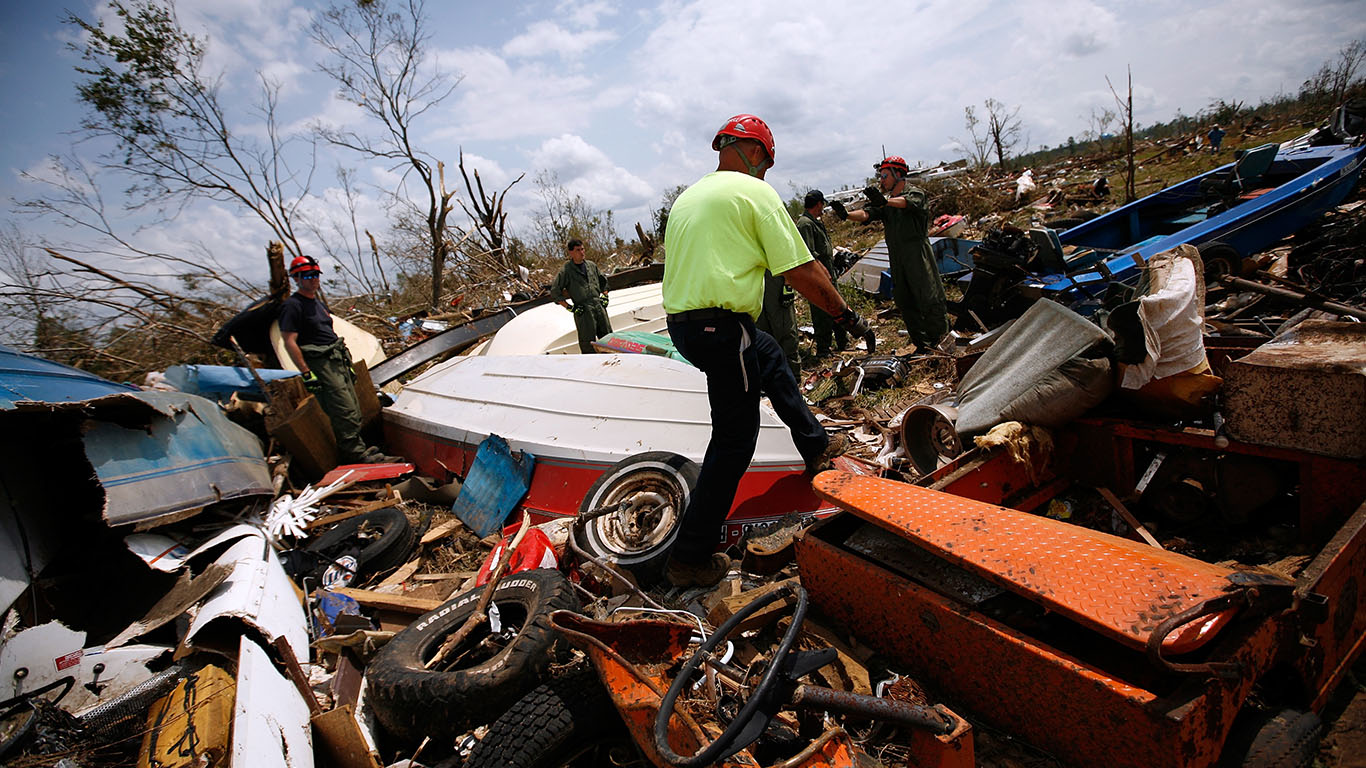
1. Alabama
> Tragedy: 2011 Tornado Outbreak
> Date: April 27, 2011
> Total fatalities: 321
> Other event considered: Birmingham Church Bombing
It was called the “Super Outbreak’’ and it happened between the 25th and 27th of April, 2011, when 362 tornadoes ravaged 14 states and killed more than 300 people, leaving an estimated $10.8 billion in damage. No state suffered more than Alabama, where the 64 tornadoes that touched down claimed 243 lives. To underscore the intensity of the cyclonic activity, one tornado with winds of up to 190 miles per hour killed 65 people along an 80-mile stretch from Greene County to Tuscaloosa in about 90 minutes.
[in-text-ad]

2. Alaska
> Tragedy: Exxon Valdez Oil Spill
> Date: March 24, 1989
> Total fatalities: None
> Other event considered: 1964 Good Friday earthquake
The Exxon Valdez Oil Spill in 1989 was at the time the worst man-made environmental disaster in U.S. history. The oil tanker ran aground in Prince William Sound, disgorging 11 million gallons of oil into the Gulf of Alaska. The oil oozed in water as far as 500 miles from the crash site, spoiled 1,300 miles of shoreline, tarred birds and otters, destroyed salmon and eagle populations, and disrupted the ecosystem for decades. Exxon sank billions of dollars into the cleanup of the Alaskan waters.

3. Arizona
> Tragedy: Grand Canyon Mid-Air Collision
> Date: June 30, 1956
> Total fatalities: 128
> Other event considered: Yarnell Hill Fire
On June 30, 1956, a Trans World Airlines Super Constellation collided with a United Air Lines DC-7 over the Grand Canyon, and both aircraft tumbled into the gorge. There were no survivors among the 128 passengers aboard both planes. The two aircraft were on regularly scheduled passenger service flights. The accident forced the federal government and the nation’s airlines to address the growing use of air travel and the increasingly crowded skies. In the wake of the tragedy, Congress passed the Federal Aviation Act of 1958 that established a single entity to control all American aircraft, military and civilian.

4. Arkansas
> Tragedy: Sultana Explosion
> Date: April 27, 1865
> Total fatalities: 1,700+
> Other event considered: Mississippi River flood of 1927
Days after the Civil War ended, on April 27, 1865, 2,300 former Union Army prisoners of war crowded onto the steamship Sultana on the Mississippi River for the trip north and home. Most never made it in what would become the worst maritime disaster in American history. An inadequately repaired boiler on the ship exploded, igniting other boilers. Fire engulfed the vessel, which eventually sank. In the cruelest of ironies, more than 1,700 men who had survived the deprivations of Confederate prisoner-of-war camps died trying to get home.
[in-text-ad-2]
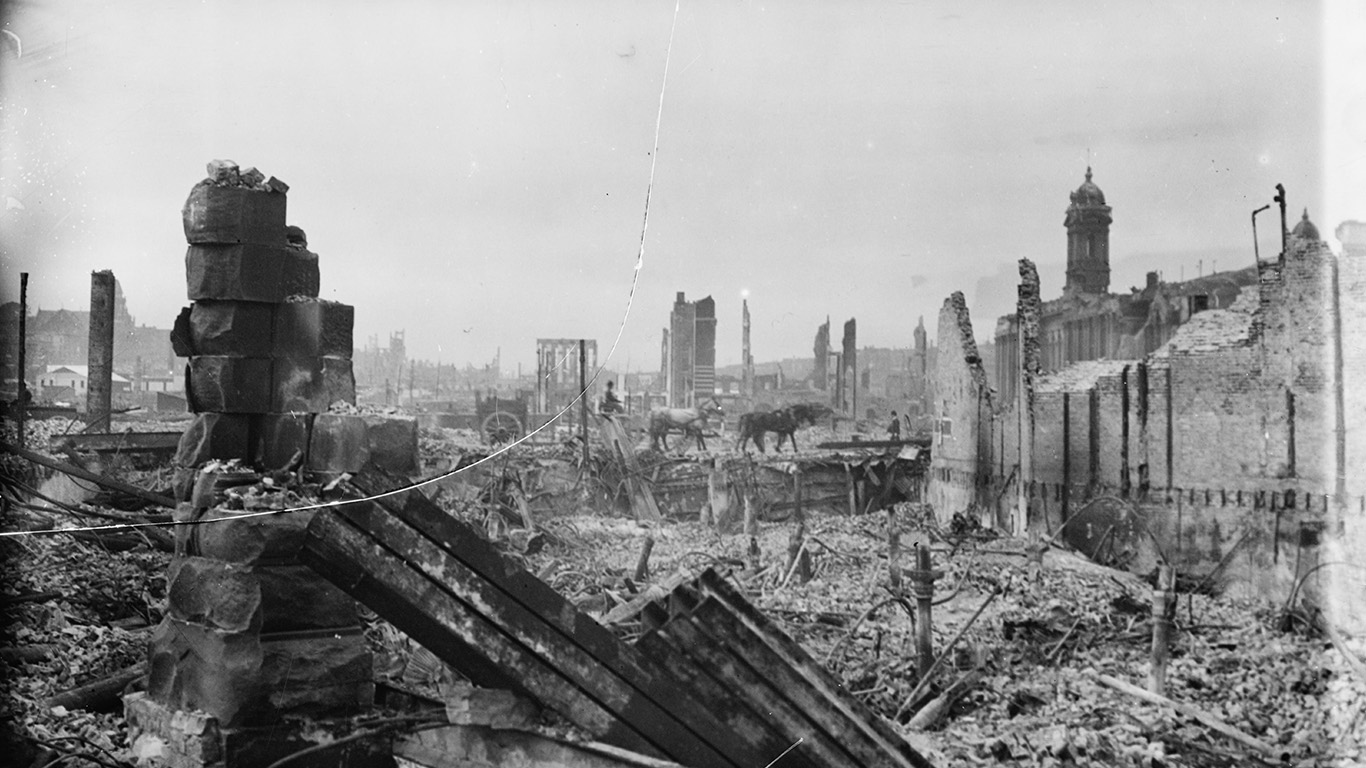
5. California
> Tragedy: 1906 San Francisco Earthquake
> Date: April 18, 1906
> Total fatalities: 3,000+
> Other event considered: San Bernardino Shooting
The San Francisco Earthquake struck the coast of northern California on April 18, 1906, leading to fires that consumed much of the city for several days. More than 3,000 people died and about 28,000 buildings were destroyed. San Francisco had grown haphazardly from the boomtown gold rush days of the mid-19th century. After the earthquake, however, San Franciscans constructed more structurally sound buildings. The quake also proved to be an opportunity for Italian immigrant A.P. Giannini, founder of Bank of America. Giannini kept his bank open after the temblor when other banks were closed, providing confidence when the city needed it. He helped bankroll two of California’s emerging industries — wine and motion pictures.
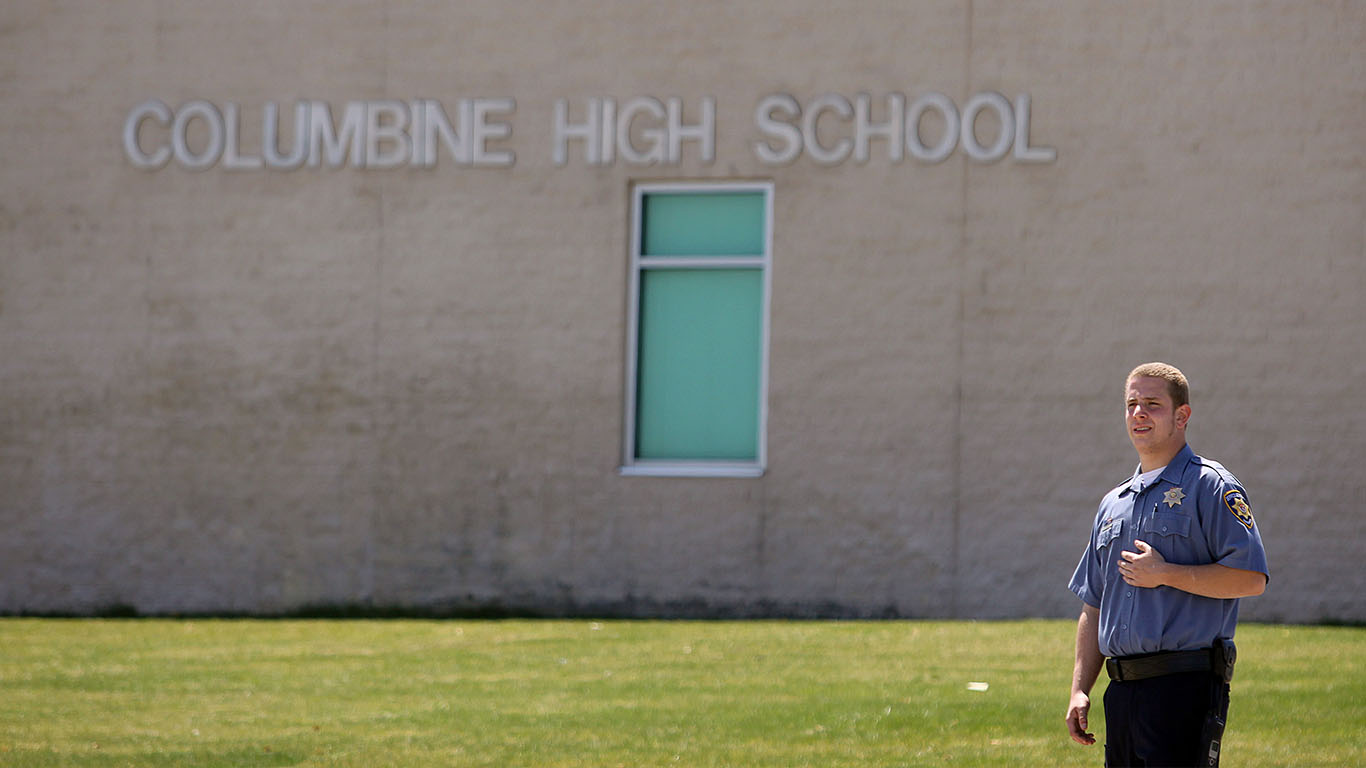
6. Colorado
> Tragedy: Columbine School Shooting
> Date: April 20, 1999
> Total fatalities: 15
> Other event considered: Big Thompson Canyon Flood
The recent Las Vegas strip mass shooting left the country once again reeling. For many Americans, it was the 1999 massacre of 12 students and one teacher at Columbine High School in Littleton, Colorado that ushered in the era of mass shootings. Teenagers Dylan Klebold and Eric Harris carried out the attack, which at the time was the deadliest school shooting in U.S. history since the University of Texas tower shooting 1966 , and would remain so until the Virginia Tech shootings in 2007.
[in-text-ad]
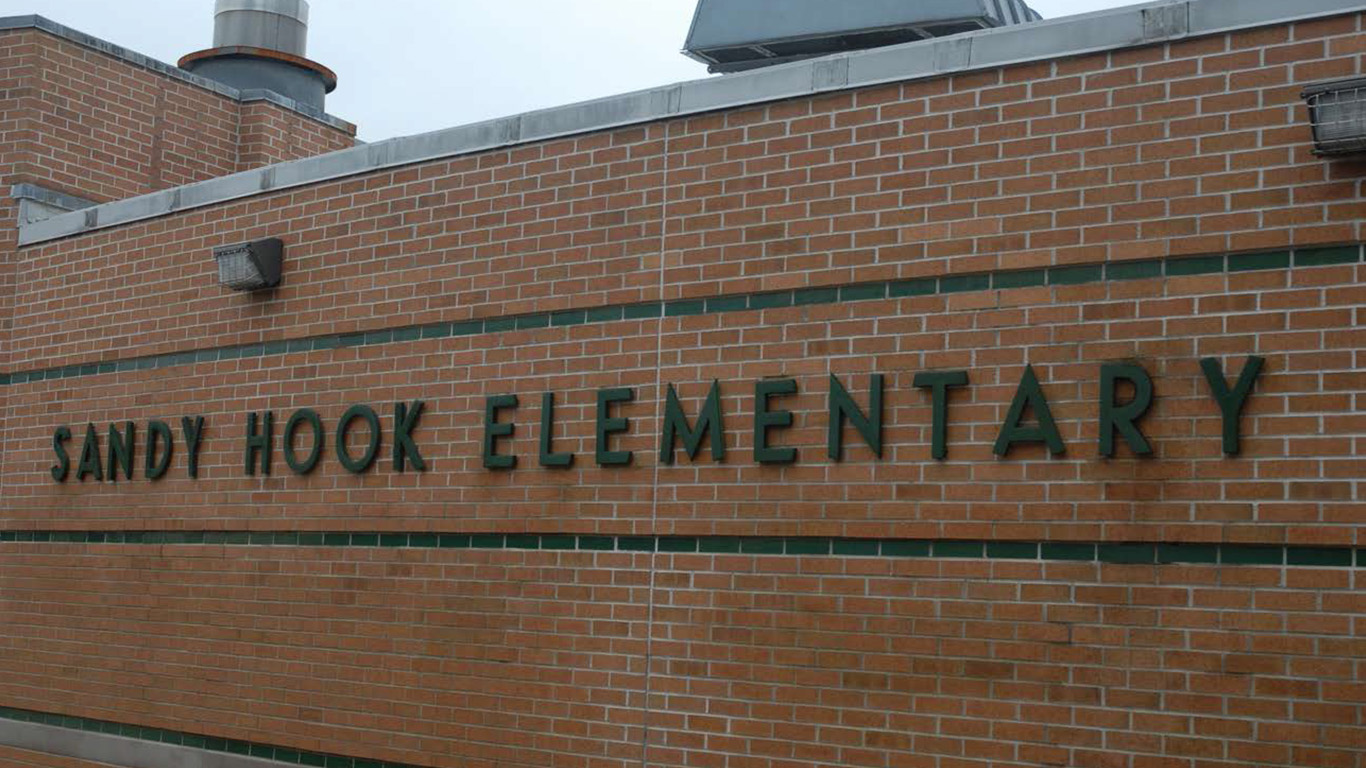
7. Connecticut
> Tragedy: Sandy Hook Elementary School Shooting
> Date: December 14, 2012
> Total fatalities: 28
> Other event considered: 1938 Hurricane
Few events have seared the nation’s psyche more than the mass shooting at Sandy Hook Elementary School in Newtown, Connecticut. The incident occurred on December 14, 2012, when Adam Lanza shot 20 children between the ages of 6 and 7 and six adult school employees. Lanza had killed his mother at their Newtown home before driving to the school. He would later commit suicide. The massacre of such young children shocked the nation and reignited the national debate over gun control.

8. Delaware
> Tragedy: Amoco Chemical Plant Explosion
> Date: October 21, 1980
> Total fatalities: 5
> Other event considered: 2006 flood
In 1980, a propylene gas explosion at an Amoco Chemical plant in New Castle left five employees dead and 30 injured. Four buildings burned and some fires blazed for more than 12 hours. The blast forced the evacuation of nearly 1,000 residents and damaged the plant’s main water lines, making it difficult for firefighters to control the conflagration.

9. Florida
> Tragedy: Space Shuttle Challenger Explosion
> Date: Jan. 28, 1986
> Total fatalities: 7
> Other event considered: Okeechobee Hurricane
The explosion of the space shuttle Challenger was probably the most-witnessed disaster of all time. Millions of people watched the launch of the shuttle on television on Jan. 28, 1986. Many of the viewers were school children eager to share in the adventure of Christa McAuliffe, who was supposed to be the first teacher in space. But just 73 seconds after liftoff the shuttle exploded, killing all seven astronauts. An investigation found that two rubber O-rings, designed to separate the sections of the rocket booster, had failed because of cold temperatures. The tragedy forced NASA to temporarily suspend the shuttle program.
[in-text-ad-2]

10. Georgia
> Tragedy: Winecoff Hotel Fire
> Date: December 7, 1946
> Total fatalities: 119
> Other event considered: Atlanta Olympic Village Bombing
The Winecoff Hotel fire in Atlanta on December 7, 1946, killed 119 people and remains the deadliest hotel fire in U.S. history. It is unclear how the fire started, but guests of the 15-story hotel were trapped because the hotel — Atlanta’s tallest — did not have fire escapes or automatic sprinklers. The 150-room Winecoff was built in 1913 and billed as “absolutely fireproof.” While most people died from fire and smoke inhalation, others leapt to their death. Following the tragedy, fire codes were upgraded across the country.
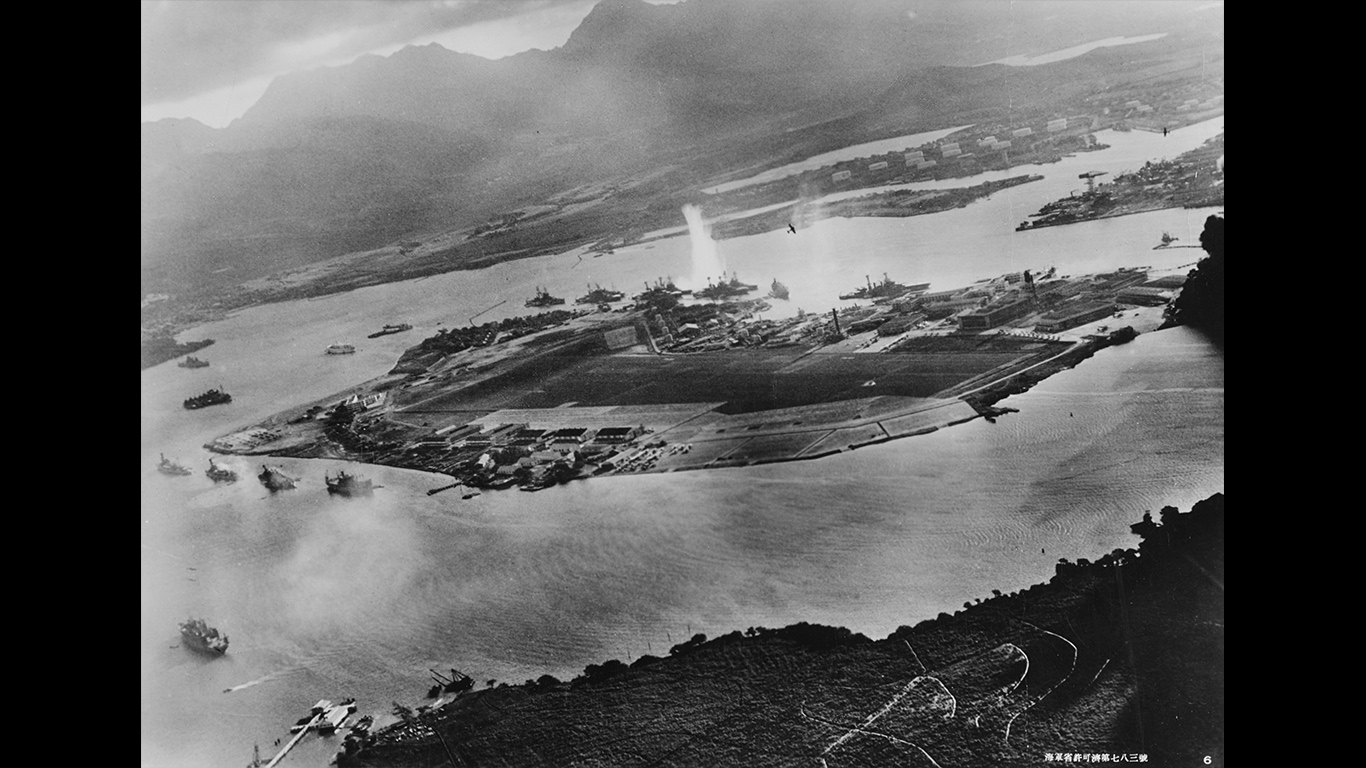
11. Hawaii
> Tragedy: Attack on Pearl Harbor
> Date: December 7, 1941
> Total fatalities: 2,400+
> Other event considered: 1946 Earthquake / tsunami
Referred to as “A day which will live in infamy” by President Franklin D. Roosevelt, the attack on Pearl Harbor was a stunning surprise assault. After years of long simmering tensions between Japan and the U.S., Japanese fighter planes caught the Pearl Harbor naval base off guard, killing more than 2,400 Americans, injuring about 1,000 more, and destroying hundreds of U.S. planes and ships. After years of staying neutral, the attack pulled the United States into World War II. Roosevelt asked congress to declare war on Japan the day after the attack.
[in-text-ad]
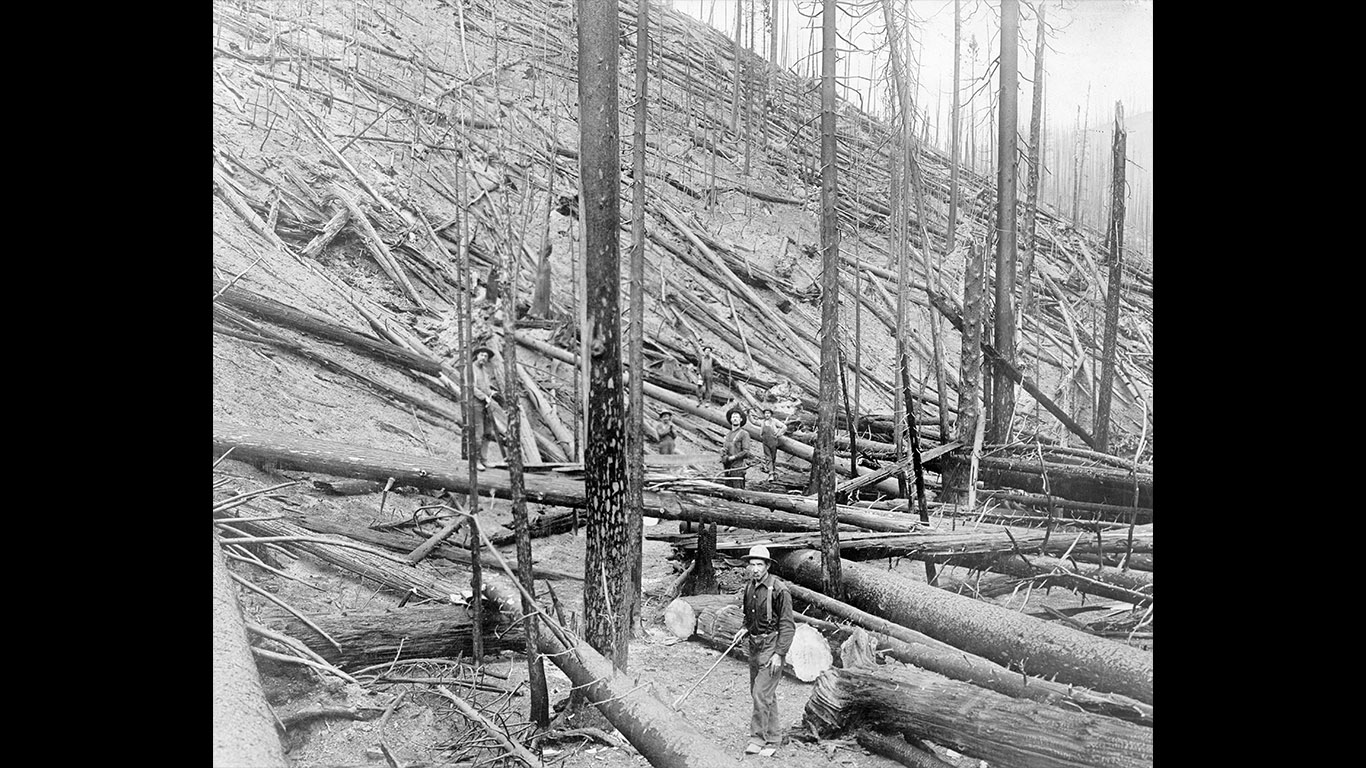
12. Idaho
> Tragedy: The Big Burn of 1910
> Date: August 20-21, 1910
> Total fatalities: 85-87
> Other event considered: Dam Collapse
The Big Burn of 1910 may have been the largest forest fire in American history. The fire consumed 3 million acres in northern Idaho and neighboring states. Coming on the heels of an extremely dry summer, the fire was all the more difficult to fight due to 70 miles per hour winds that further stoked the fire. Describing the fire in Coeur d’Alene National Forest, a forester wrote that the wind and the flames formed a “truly a veritable red demon from hell.” More than 80 people were killed by the blaze. The lessons learned from the fire helped define the mission of the U.S. Forest Service and refine its firefighting techniques.
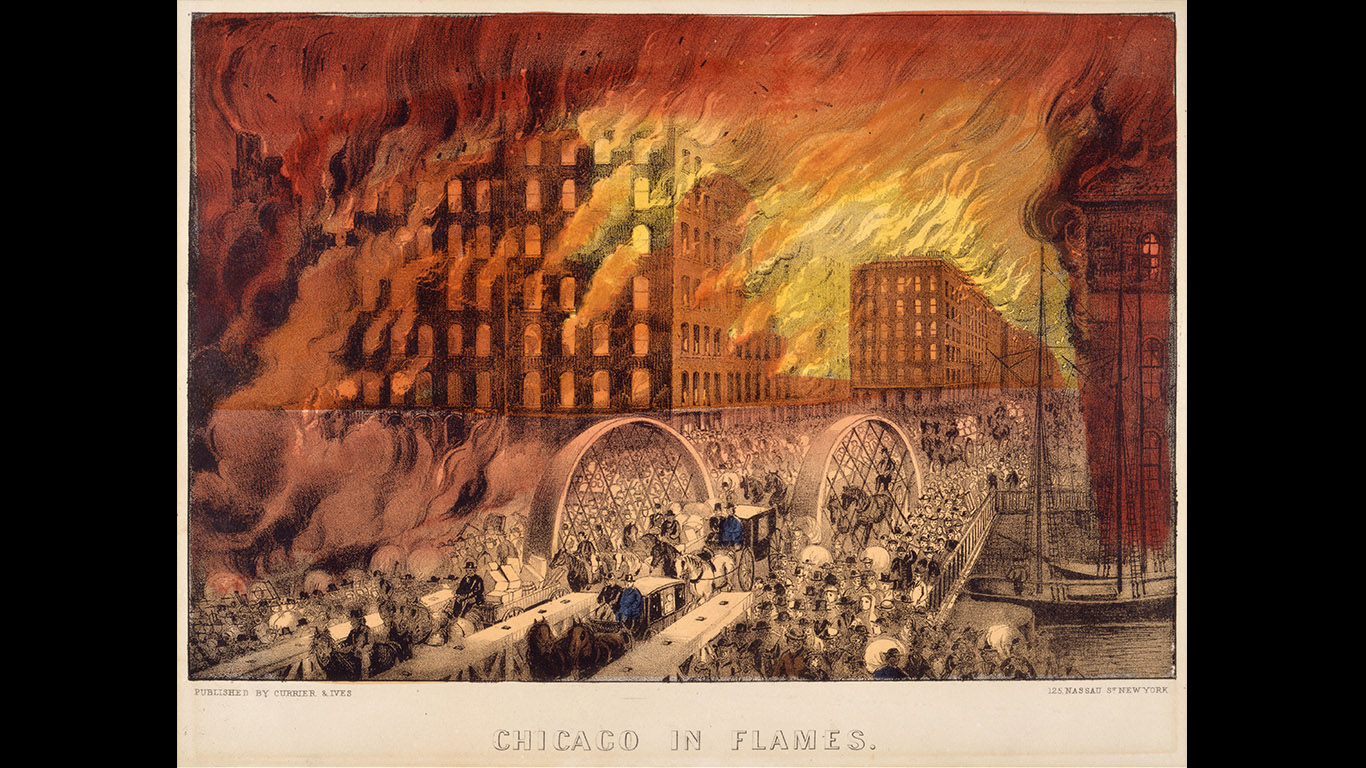
13. Illinois
> Tragedy: Great Chicago Fire
> Date: October 8-10, 1871
> Total fatalities: 300
> Other event considered: Chicago Heat Wave
By 1871, Chicago was one of the fastest-growing cities in the world, a midwestern colossus eventually immortalized in a poem by Carl Sandburg. But it was growing too fast with little planning. On Oct. 8, a fire started in the O’Leary barn — and it spread quickly. The conflagration killed 300 people and left over 100,000 homeless. Although one-third of the city was consumed by fire, much of the transportation infrastructure remained intact. In the aftermath, laws were passed requiring new buildings be constructed with fireproof materials. The world’s first skyscrapers would rise in Chicago before the century was up.

14. Indiana
> Tragedy: 1963 Coliseum Explosion
> Date: October 31, 1963
> Total fatalities: 74
> Other event considered: 1913 Flood
Halloween night, 1963, was supposed to be a night of fun for the many who went to the “Holiday On Ice” skating exhibition at the Indiana State Fairgrounds Coliseum in Indianapolis. The festive event, however, turned into a disaster when an explosion ripped through the stands, killing 74 and injuring hundreds more. It was later determined that a faulty propane tank filled the room with gas that ignited when it came into contact with an electric popcorn machine. Among the dead were many children. Several people were indicted in connection with the incident, but the only conviction was eventually overturned by Indiana Supreme Court.
[in-text-ad-2]
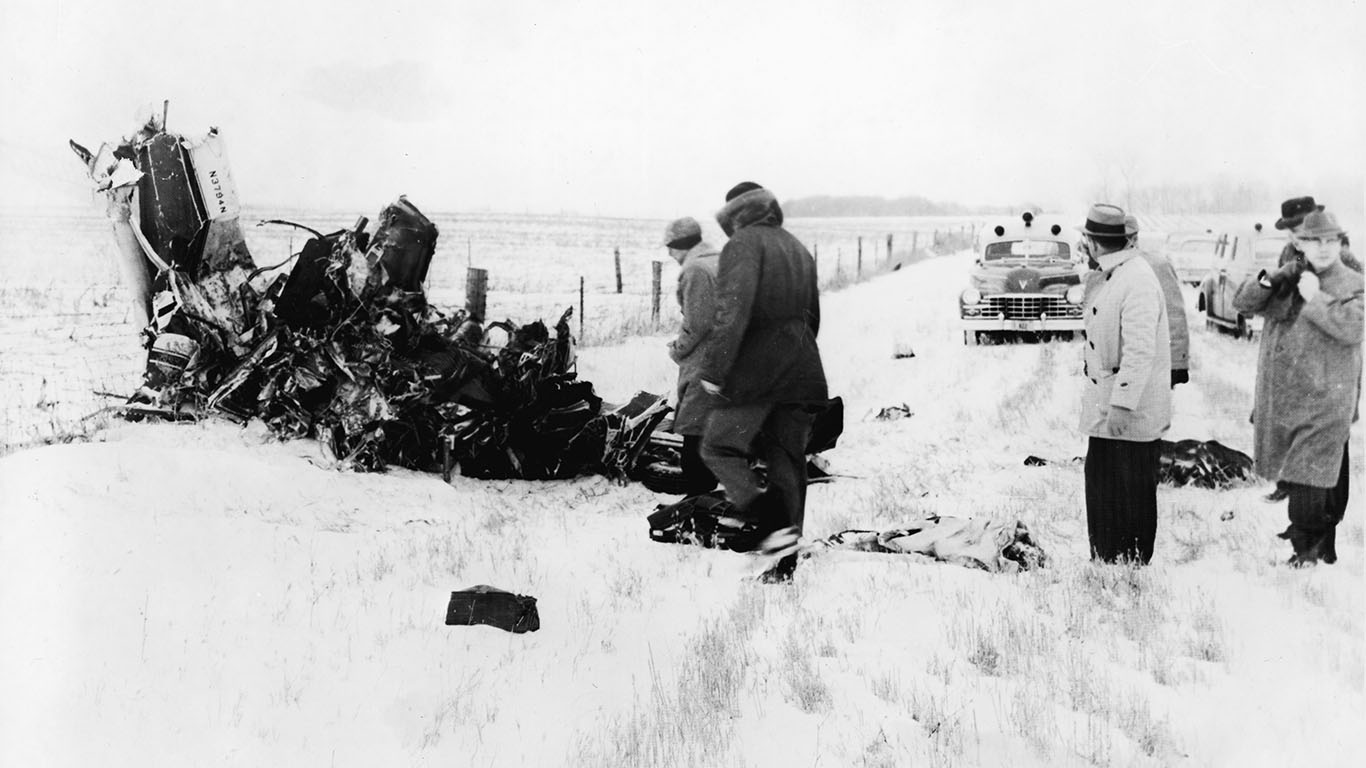
15. Iowa
> Tragedy: The Day the Music Died
> Date: February 3, 1959
> Total fatalities: 4
> Other event considered: Armistice Day Blizzard
Early rock and roll icons Buddy Holly, the Big Bopper, and Ritchie Valens, along with a pilot, were killed in a plane crash on Feb. 3, 1959, shortly after takeoff from Clear Lake, Iowa. Holly had grown tired of riding a tour bus to shows and hired the plane. The three musicians were traveling to Fargo, North Dakota for their next show when the crash occurred. The tragedy would be immortalized in the song “American Pie” by Don McLean, and the incident would be referred to as “The Day the Music Died.”
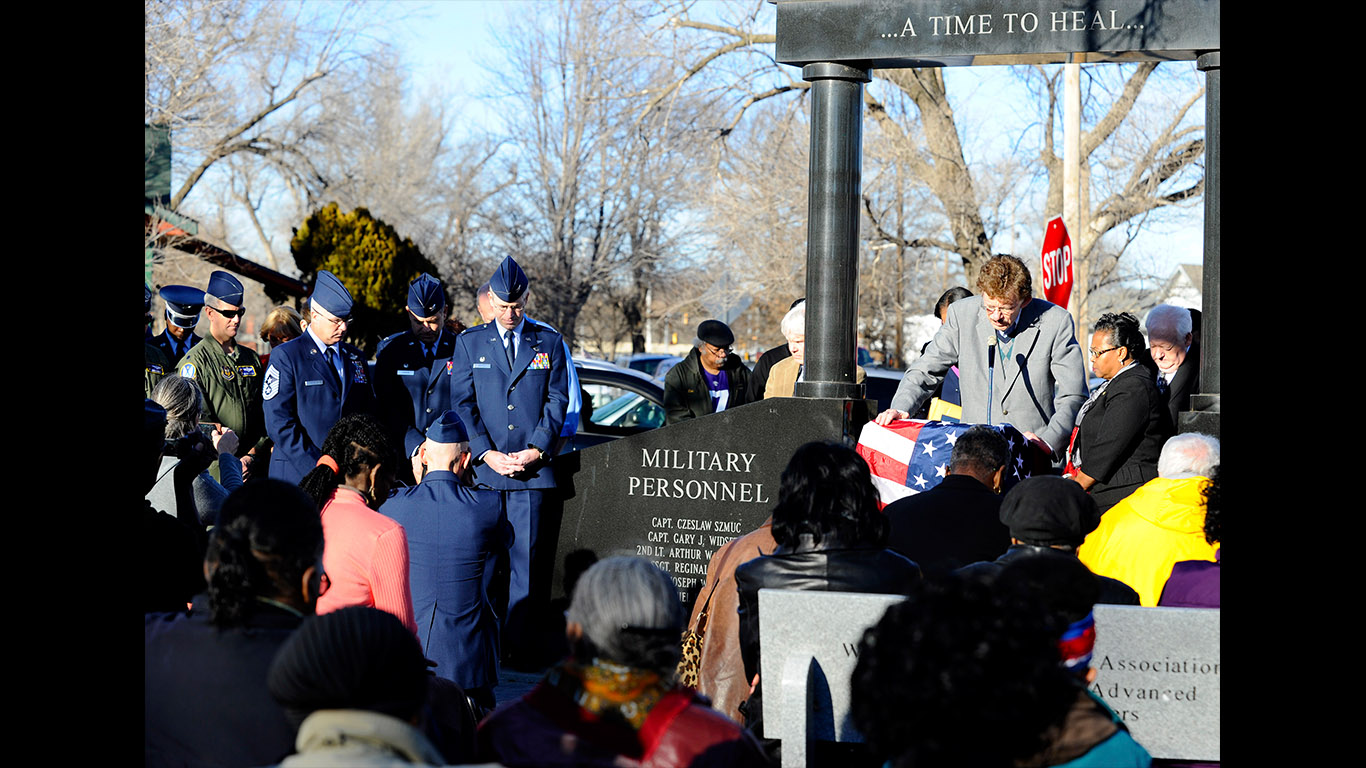
16. Kansas
> Tragedy: Piatt St. Plane Crash
> Date: January 16, 1965
> Total fatalities: 30
> Other event considered: 1955 Tornado Outbreak
In early 1965, a plane crashed into a neighborhood in Wichita, Kansas, killing 23 people on the ground and seven crew members. The plane was a Boeing tanker carrying jet fuel for the Air Force.
The plane crashed only four minutes after takeoff, just a short ways away from Wichita State University. The jet fuel and high winds caused massive flames, making it difficult for first responders to find victims.
[in-text-ad]

17. Kentucky
> Tragedy: Beverly Hills Supper Club Fire
> Date: May 28, 1977
> Total fatalities: 165
> Other event considered: 2009 Ice Storm
The Beverly Hills Supper Club in Southgate was a hotspot that once hosted entertainment luminaries such as Frank Sinatra. Tragedy struck when the building caught fire and 165 people perished. A Kentucky state investigative report found 10 contributing factors to the tragedy, among them: Overcrowding in the club’s Cabaret Room, where most of people were killed; no employee training in evacuation and emergency procedures; no audible alarm or sprinkler systems.
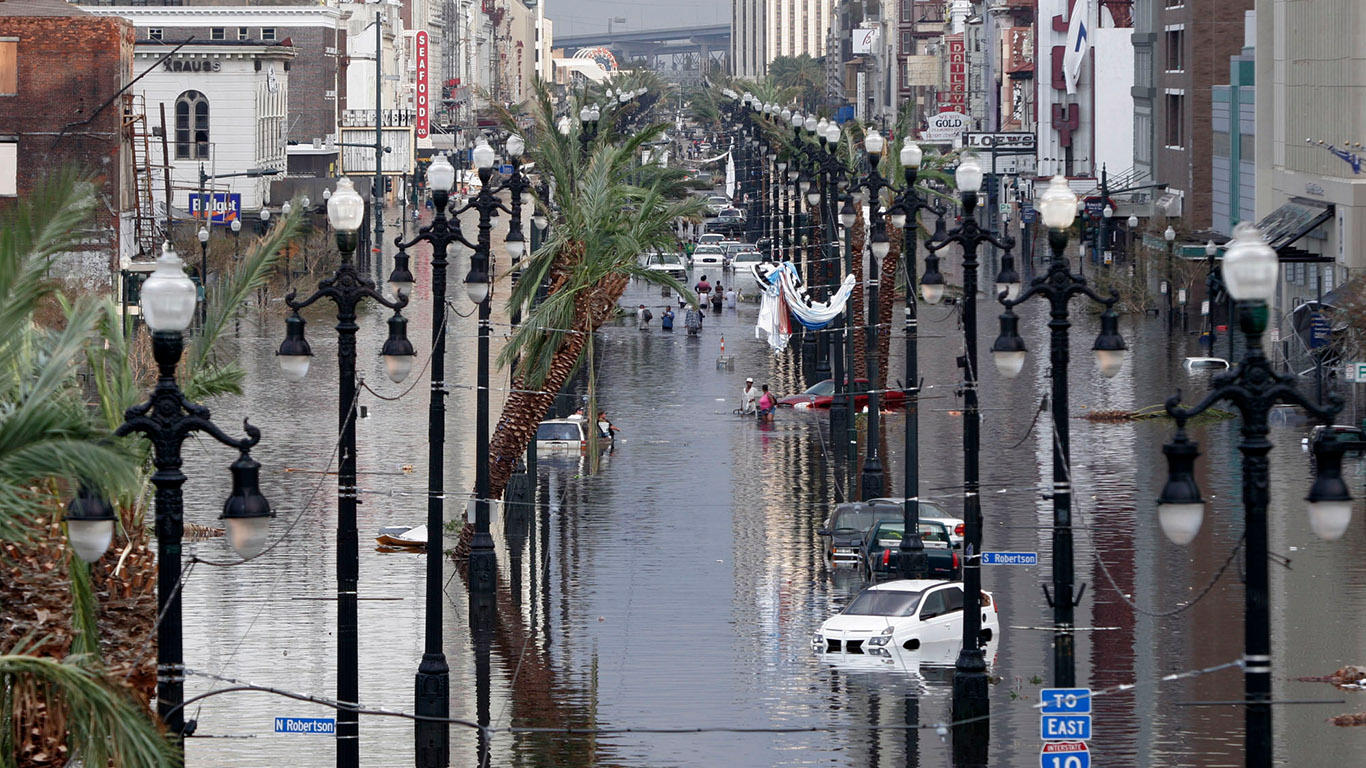
18. Louisiana
> Tragedy: Hurricane Katrina
> Date: August 29, 2005
> Total fatalities: 1,833
> Other event considered: Pan Am flight 759
When meteorologists first noticed the tropical depression that became Hurricane Katrina over the Bahamas, evacuation warnings were soon spread to Gulf Coast states. In fact, New Orleans Mayor Ray Nagin issued the city’s first-ever mandatory evacuation the day before Katrina made landfall. What made New Orleans the most at-risk city was its infrastructure. The Army Corps of Engineers had built a system of levees and seawalls throughout the 20th century to keep the city from flooding. But when Katrina hit, the levees failed. As a result, 80% of the city to flooded. And of the 1,577 direct and indirect fatalities in Louisiana, 40% were by drowning. Hurricane Katrina caused between $108 and $160 billion in damages across several states, and is the costliest hurricane in U.S. history.
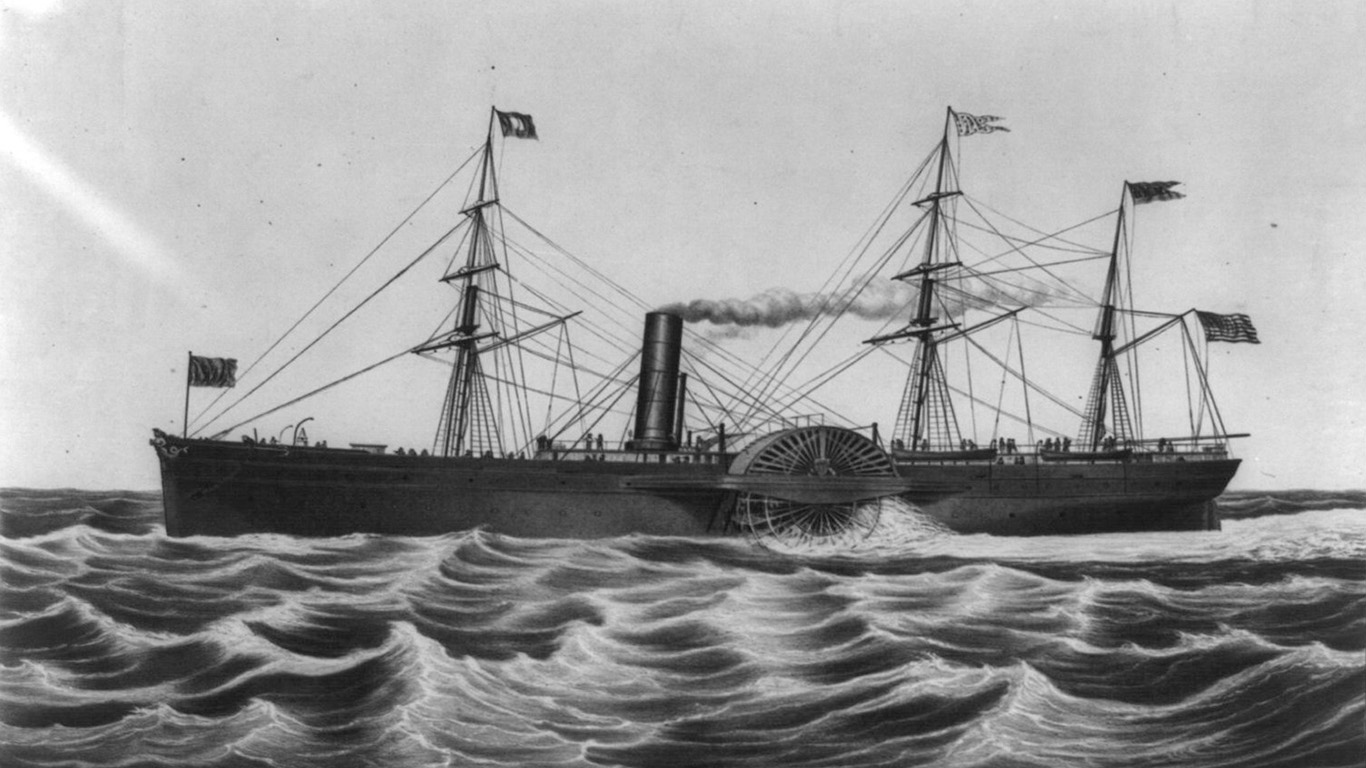
19. Maine
> Tragedy: RMS Bohemian Sinking
> Date: February 22, 1864
> Total fatalities: 42
> Other event considered: 1919 Onawa train wreck
There have been events in Maine’s history that have led to a greater loss of life than the sinking of the RMS Bohemian off the state’s coast, near Elizabethtown. There have also been deadlier shipwrecks. But the 1864 sinking of the steamer in heavy fog is a particularly sad tale as the ship was full of immigrants looking forward to a new life. They were at the end of a long voyage when the ship lost visibility, struck a rock, and sank, leading to the drowning of 42 people. The wreck and the dead have been largely forgotten by history.
[in-text-ad-2]
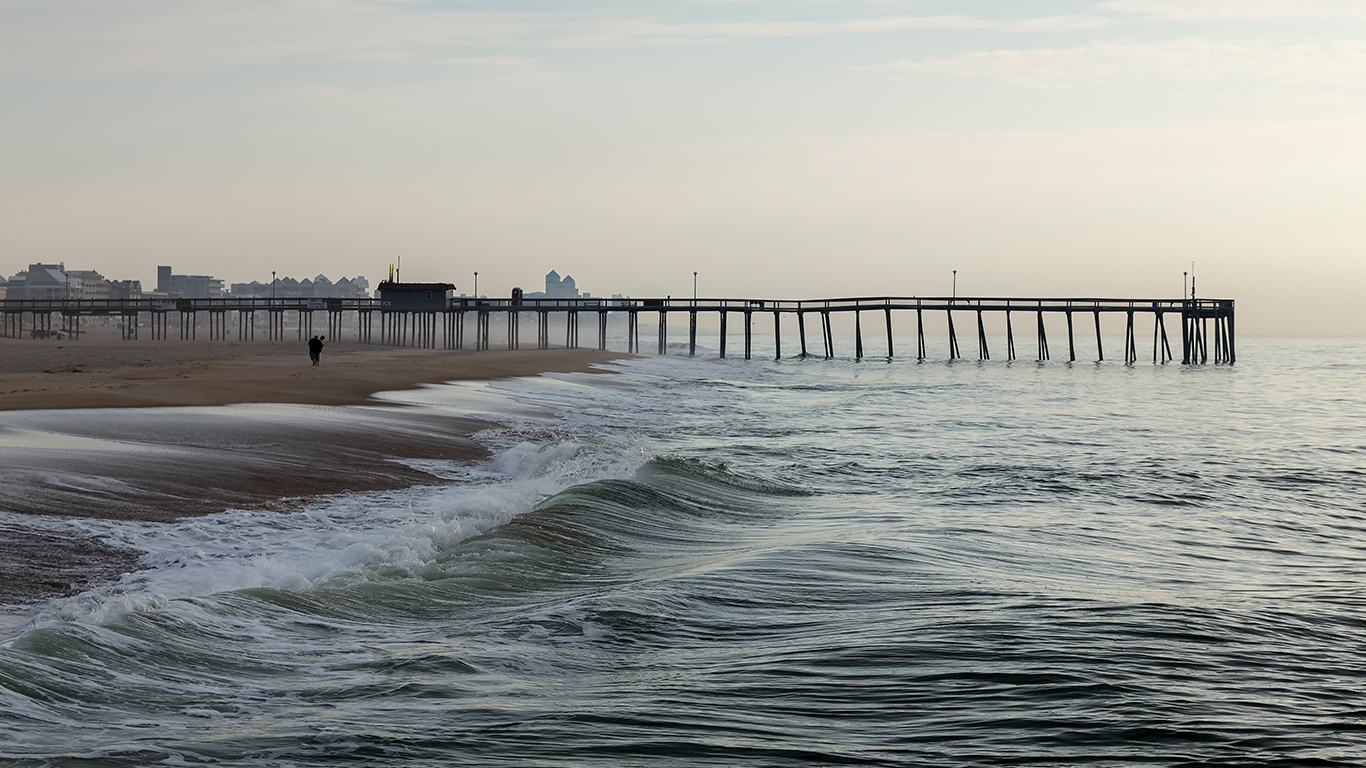
20. Maryland
> Tragedy: Tivoli pier disaster
> Date: July 23, 1883
> Total fatalities: 63
> Other event considered: Pan Am flight 214
A picnic in 1883 lead to disaster in Baltimore. About 500 people, many of them families, bought barge tickets and traveled to a park called Tivoli for a day out. However, as many waited on the pier for the return trip, the barge hit the pier and sent dozens of people into the water. Darkness made it difficult to rescue the people who suddenly fell into the Patapsco River, contributing to the chaotic scene. In all, 63 people, many of them children, drowned as a result.

21. Massachusetts
> Tragedy: Cocoanut Grove Fire
> Date: November 28, 1942
> Total fatalities: 492
> Other event considered: Great Boston Fire of 1872
One November night in Boston’s famous Cocoanut Grove nightclub, a fake palm tree, which was accidentally kindled by a busboy trying to fix a lightbulb, quickly set the building ablaze. The building’s main exit was a single revolving door, which quickly became blocked with victims trying to flee the building. The building’s most prominent emergency exit could not be opened. The total fatality count came to 492, making it one of the deadliest single fires in American history. The fire led to substantial changes in Boston’s fire code, including major improvements in emergency exit requirements and the temporary banning of revolving doors.
[in-text-ad]

22. Michigan
> Tragedy: Great Michigan Fire
> Date: September 5, 1881
> Total fatalities: 282+
> Other event considered: Flight 255
In the early days of settlement in the United States, timber was a highly profitable and important industry in the country. But because of the extensive logging, branches and brush accumulated, turning with time –and dry, hot winds — into combustible lumber waiting to catch fire. It was 10 years after wildfires spread through Michigan’s thumb that a more horrendous fire ravaged the same area. An estimated 282 lives were lost, 1,521 dwellings were destroyed, and 14,000 people became dependent on public aid.
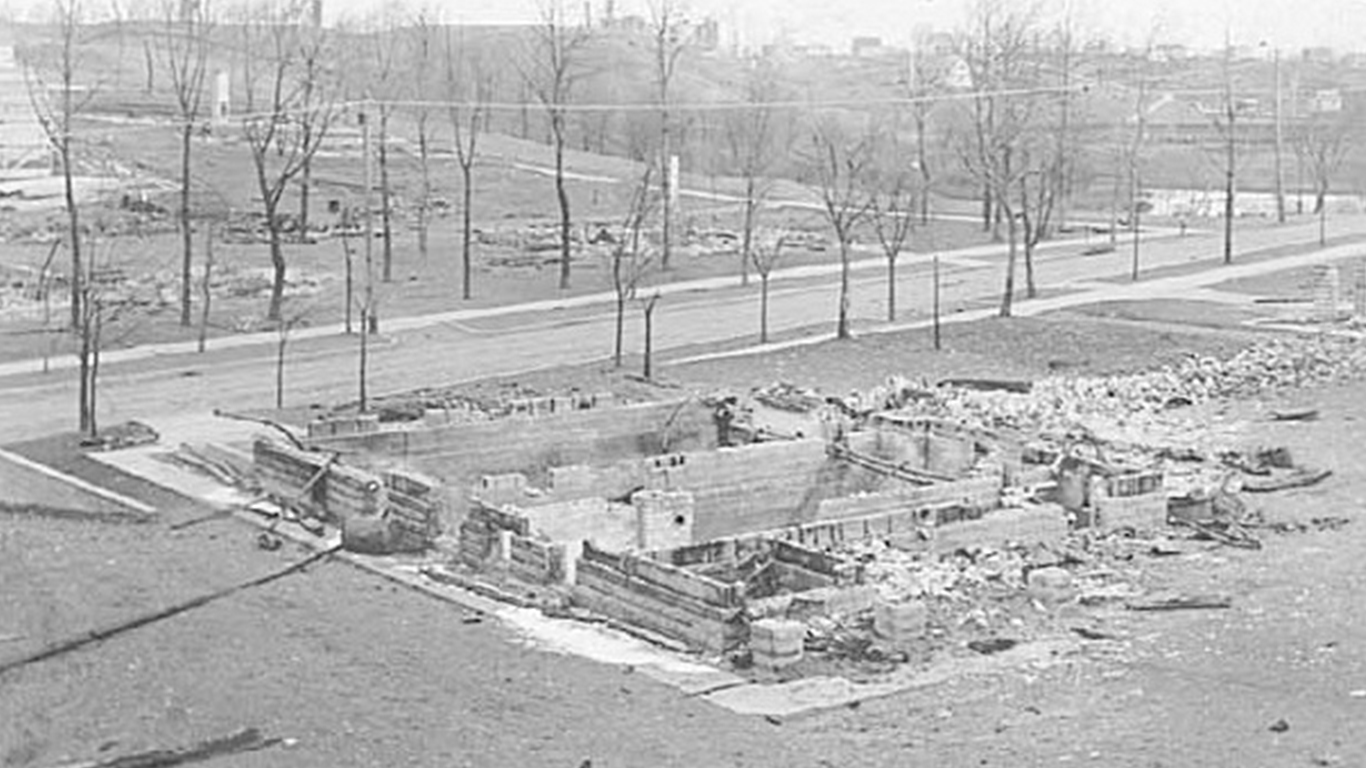
23. Minnesota
> Tragedy: Cloquet fire
> Date: October 12, 1918
> Total fatalities: 453
> Other event considered: Sea Wing boat collapse
The Cloquet Fire of Minnesota was one of the most destructive and deadly wildfires ever in the United States. The uncharacteristically dry summer of 1918 and the wood left behind by the timber industry were the perfect circumstances for a massive blaze. Some 52,000 homes were destroyed and 38 towns and villages were lost to the fire. The fire also claimed the lives of 453 people and hundreds of thousands of livestock, dealing a huge blow to the farming communities in the area.
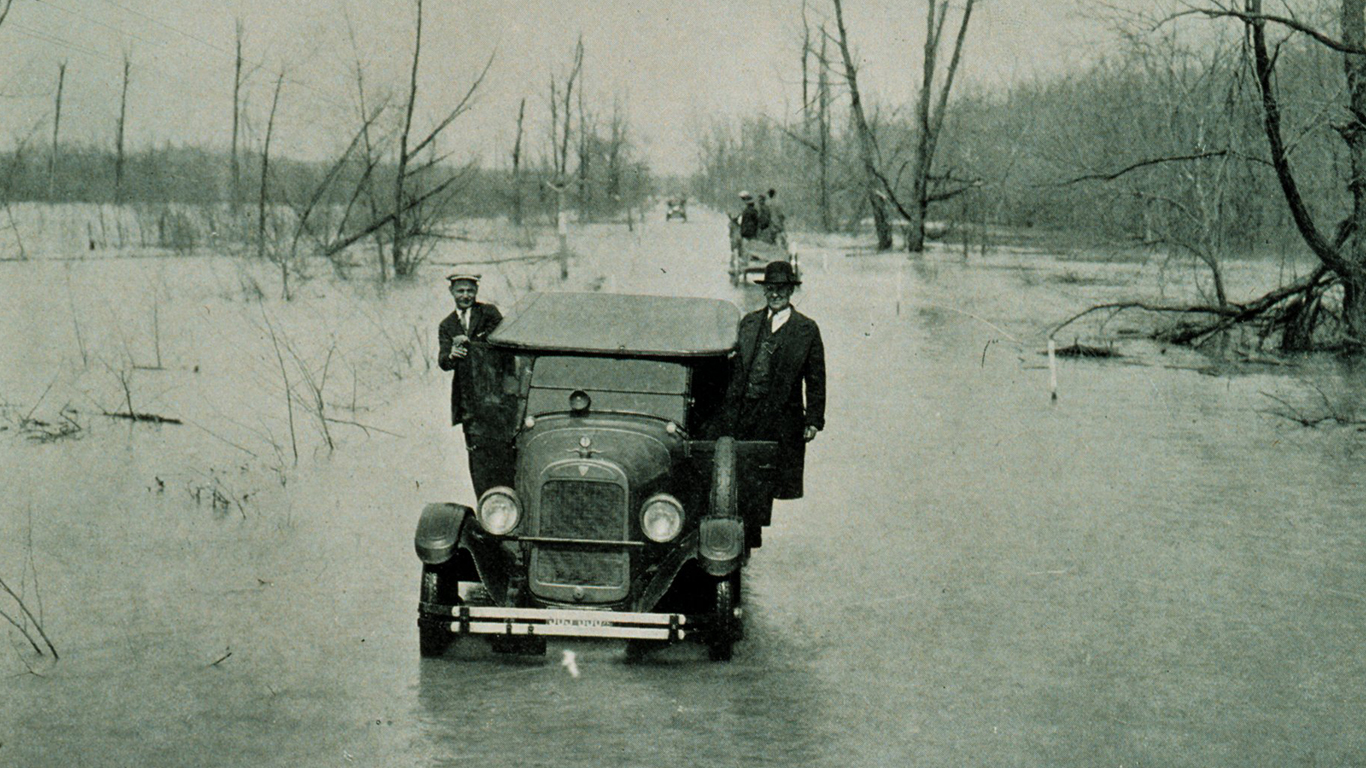
24. Mississippi
> Tragedy: Great Mississippi Flood of 1927
> Date: 1926-1927
> Total fatalities: 250+
> Other event considered: Rhythm nightclub fire
The Great Mississippi River Flood inundated 16 million acres and displaced about 640,000 people from Illinois to Louisiana. In Vicksburg, Mississippi, the river swelled to 80 miles wide. The flood has been called one of America’s greatest peacetime disasters. The flood had a profound effect on the African-American population living in the flood zone. Many were forced to leave their homes in the South, and the flood hastened what would become known as the Great Migration to northern cities as African-Americans sought a better life.
[in-text-ad-2]
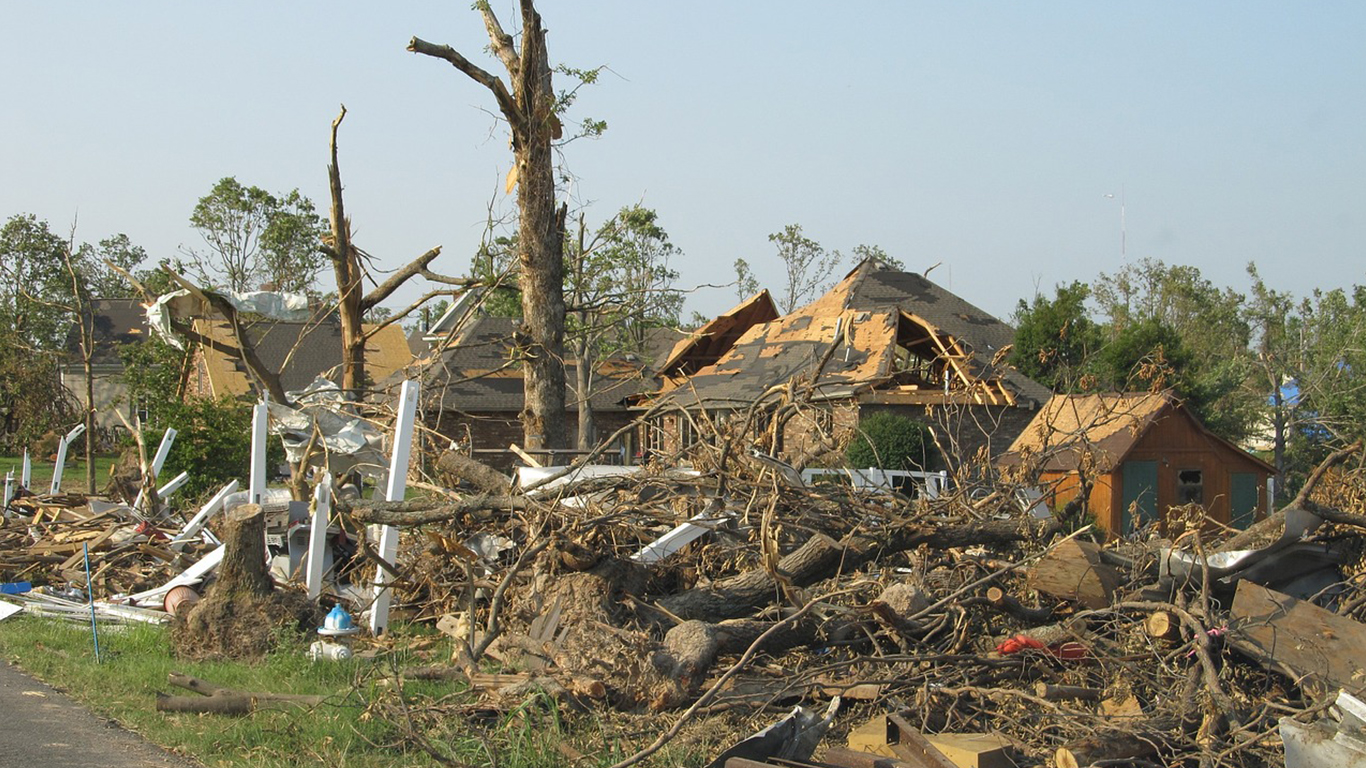
25. Missouri
> Tragedy: Joplin Tornado
> Date: May 22, 2011
> Total fatalities: 158
> Other event considered: Hyatt walkway collapse
A tornado tore through Joplin, a city in Southwestern Missouri, in May 2011. The tornado devastated the town, leaving 158 people dead and over 1,100 injured. It is believed the tornado had winds of over 200 miles per hour. The tornado was classified as EF5, the highest classification. The tornado was the costliest in American history, causing an estimated $2.8 billion in damages.
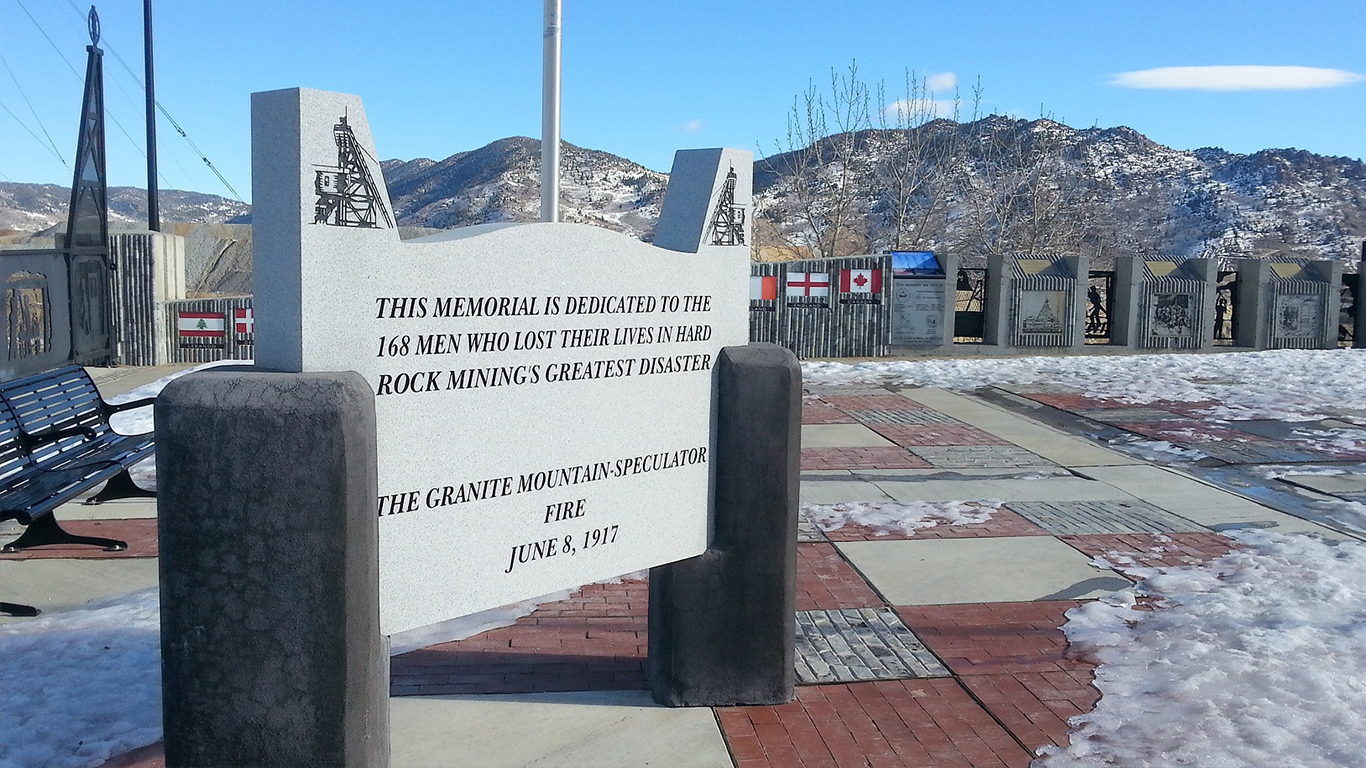
26. Montana
> Tragedy: Granite Mountain Mine Disaster
> Date: June 8, 1917
> Total fatalities: 168
> Other event considered: 1910 Fire
The Butte, Montana copper mine was one of the biggest mining operations in the world a century ago, and with the U.S. entry into World War I, demand for the commodity soared. On June 8, 1917, men were lowering an electric cable down the mine shaft to finish work on a sprinkler system when the cable slipped from its clamps, tearing away the insulation and exposing oily paraffin paper. When a crew went to examine the cable, one of the men accidentally touched the insulation with a lamp and ignited the paper. Fire and toxic smoke spread through the shaft, endangering the lives of the miners. By the time rescue operations ended eight days later, 168 miners had died.
[in-text-ad]
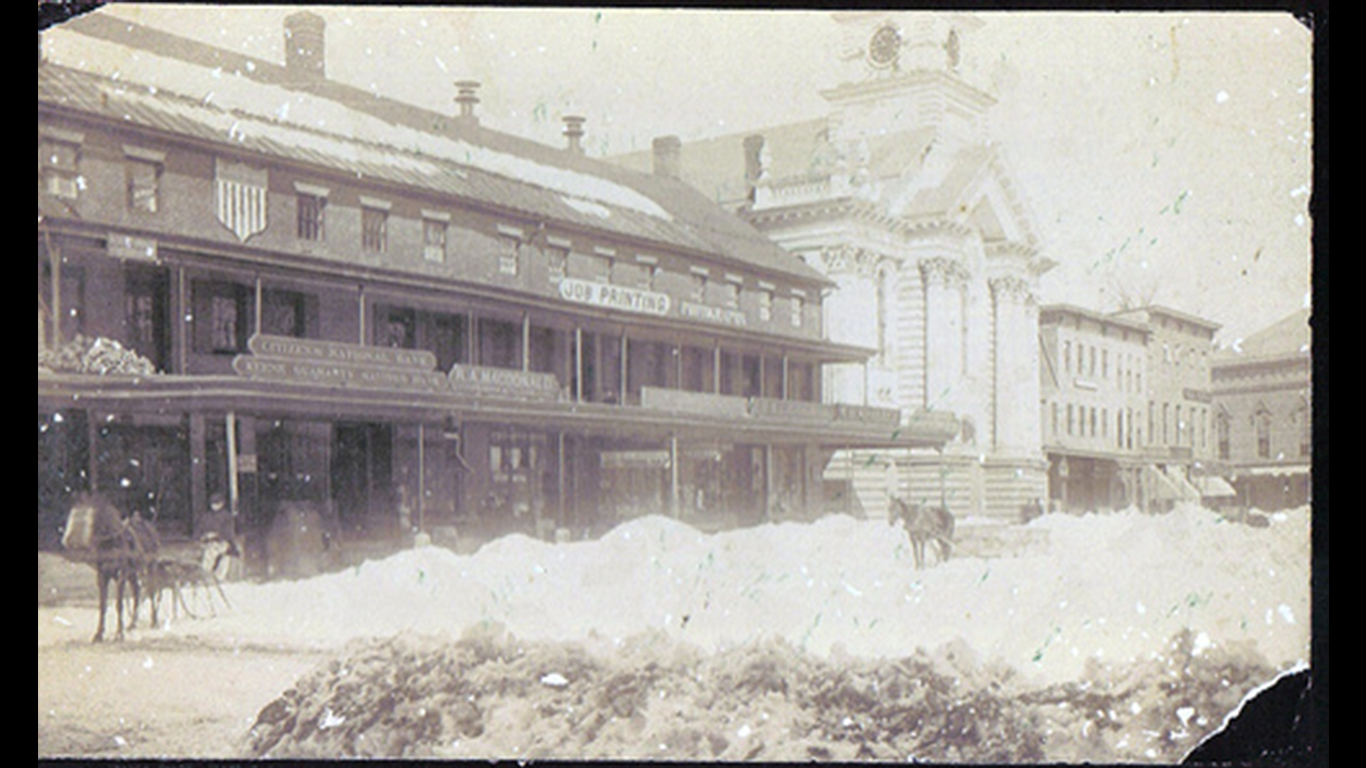
27. Nebraska
> Tragedy: 1888 Schoolhouse Blizzard
> Date: January 12, 1888
> Total fatalities: 235
> Other event considered: Blizzard of 1949
On January 12, 1888, Nebraska had been experiencing unseasonably warm weather for the dead of winter. As a result, many children were sent to school improperly dressed for what was to come. A massive blizzard swept across the plains, reaching Nebraska around 3 p.m., right when school was letting out. Temperatures quickly dropped, in some places reportedly by as many as 100 degrees, and blinding snow quickly created deadly conditions for the children and workers on their way home. Many were caught outside and froze to death.
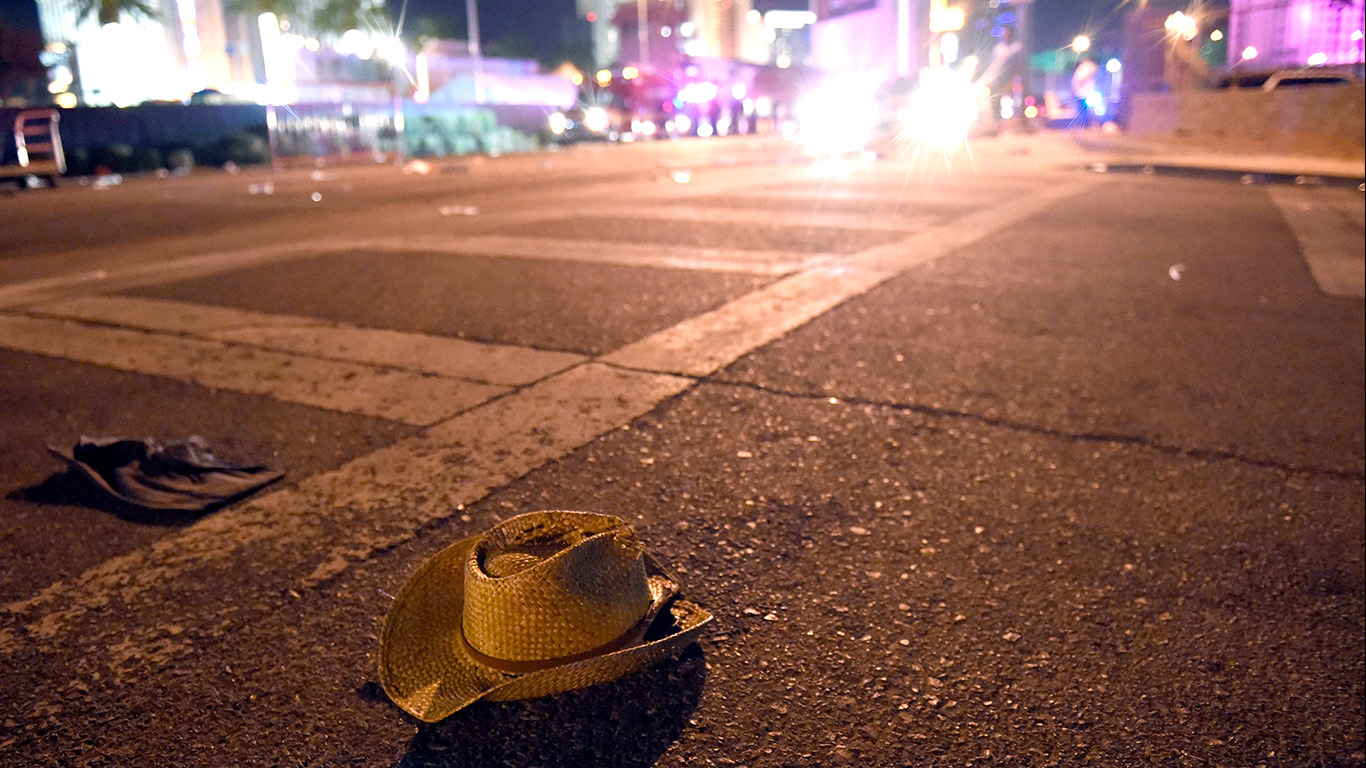
28. Nevada
> Tragedy: Las Vegas Shooting
> Date: October 1, 2017
> Total fatalities: 58+
> Other event considered: 1980 MGM Grand Fire
The deadliest mass shooting in American history began on the 32nd floor of the Mandalay Bay Hotel on the Las Vegas Strip on October 1, 2017. Stephen Paddock, the 64-year-old gunman, fired on a crowd of 22,000 gathered at a country music festival from above, killing 58 people and injuring over 500 more. He had an arsenal of 23 guns in the room, and police later found explosives and more ammunition in his car. The retired accountant had no apparent political or religious affiliations or a criminal record. The shooter fired at concert goers for 10 minutes before taking his own life.
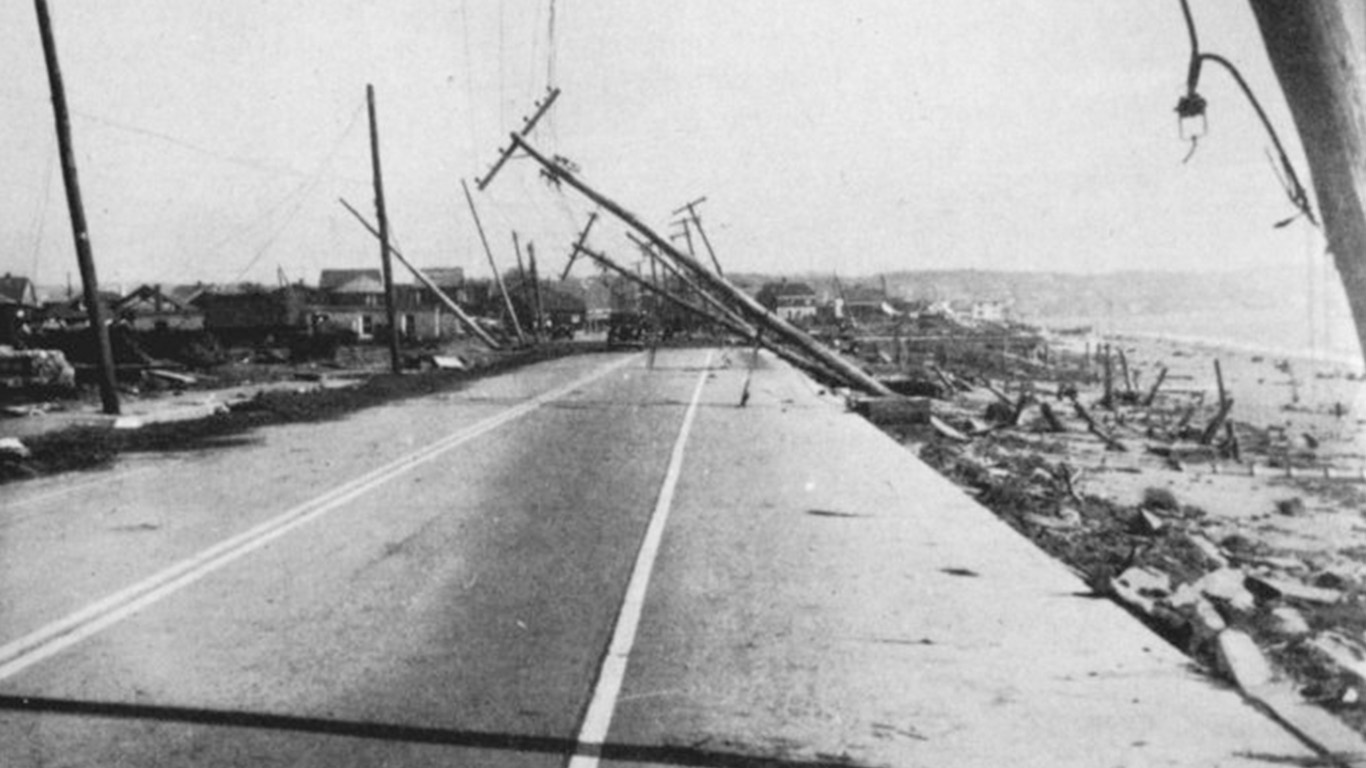
29. New Hampshire
> Tragedy: The Great Hurricane of 1938
> Date: September 21, 1938
> Total fatalities: 682
> Other event considered: 2007 Nor’Easter
The enormous hurricane that struck the east coast in 1938 battered many Northeastern states, and New Hampshire took much more storm damage than the state was used to. The official death toll from the storm is 682, though some sources put it as high as 800. Though only 13 of those fatalities were in New Hampshire, the town of Peterborough was extensively damaged after a fire broke out in the aftermath of the storm, and firefighters were unable to battle the blaze due to flood waters.
[in-text-ad-2]
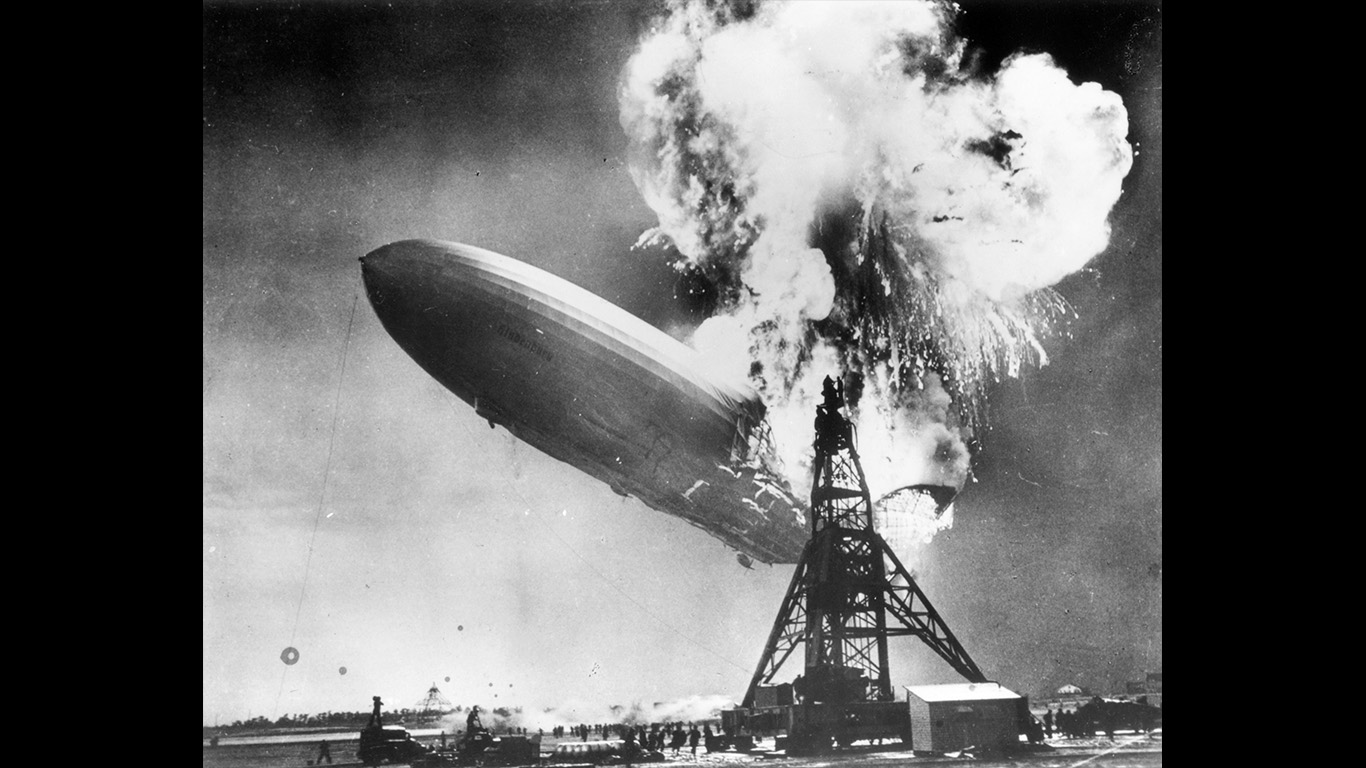
30. New Jersey
> Tragedy: Hindenburg
> Date: May 6, 1937
> Total fatalities: 36
> Other event considered: Hurricane Sandy
The destruction of the Hindenburg might be the most famous disaster ever filmed, remembered forever for the sorrow-filled reporting of radio announcer Herbert Morrison, “Oh, the humanity.” The zeppelin, a symbol of German technological prowess and the largest dirigible ever built, was preparing to land at the U.S. naval station in Lakehurst, on May 6, 1937 when it caught fire, killing 36 people. To this day, no one is certain what caused the explosion. The theories include sabotage, hydrogen explosion, and a fatal flaw in the coating of the Hindenburg’s covering. The Hindenburg catastrophe accelerated the demise of lighter-than-air travel.
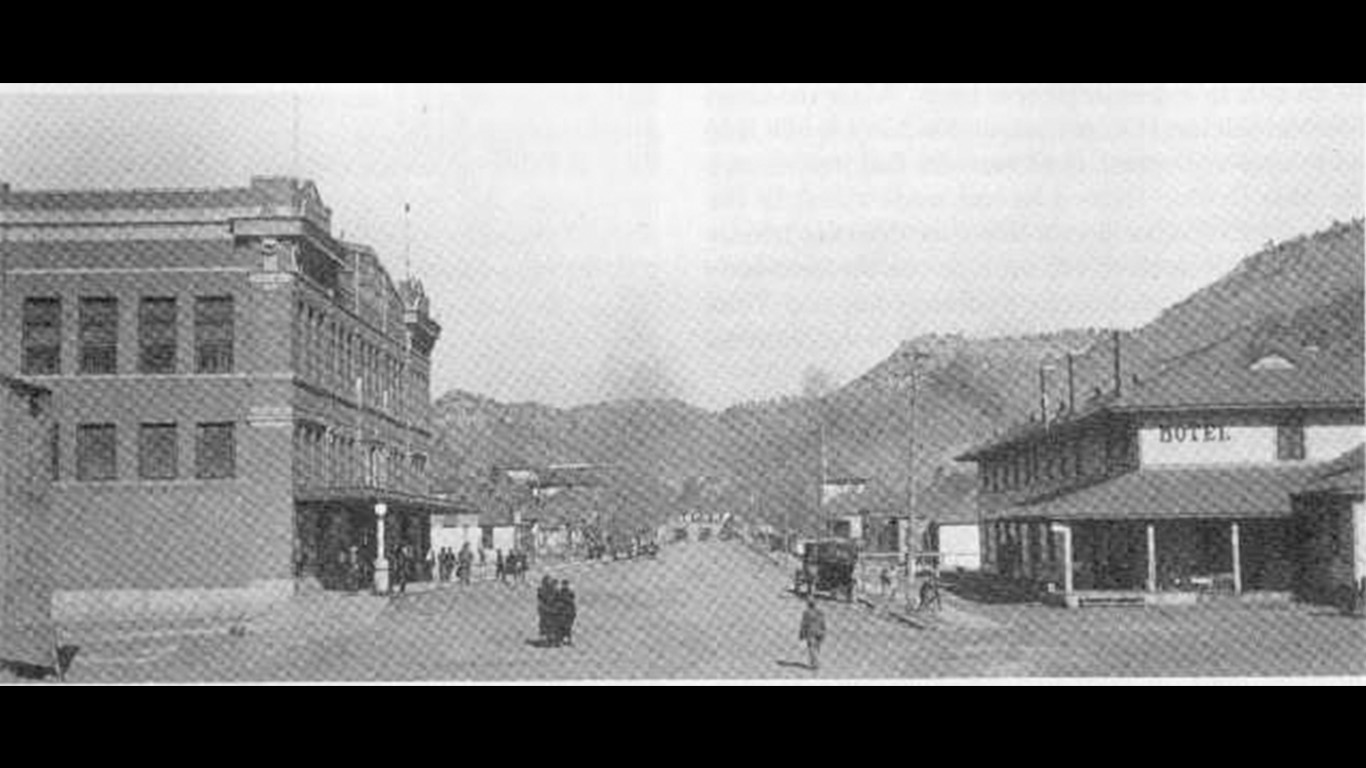
31. New Mexico
> Tragedy: Dawson Coal Mine Explosion
> Date: October 22, 1913
> Total fatalities: 263
> Other event considered: Pancho Villa Raid
Mining is one of the most dangerous jobs in the world, and few were more aware of it than the residents of New Mexico in and around the mining town of Dawson in the 1920s and 30s. On the afternoon of October 22, a massive explosion of coal dust within the mine instantly killed several hundred miners, making it one of the worst of its kind in U.S. history. Within a decade, two more major disasters, at least one of which was also caused by exploding coal dust, would occur in the mines surrounding Dawson, putting the total loss of life at close to 400. The American mining industry would not make proper changes to address the dangers of coal dust until the 1970s. Today, the town of Dawson has all vanished, leaving only a cemetery with iron crosses commemorating the lost miners.
[in-text-ad]
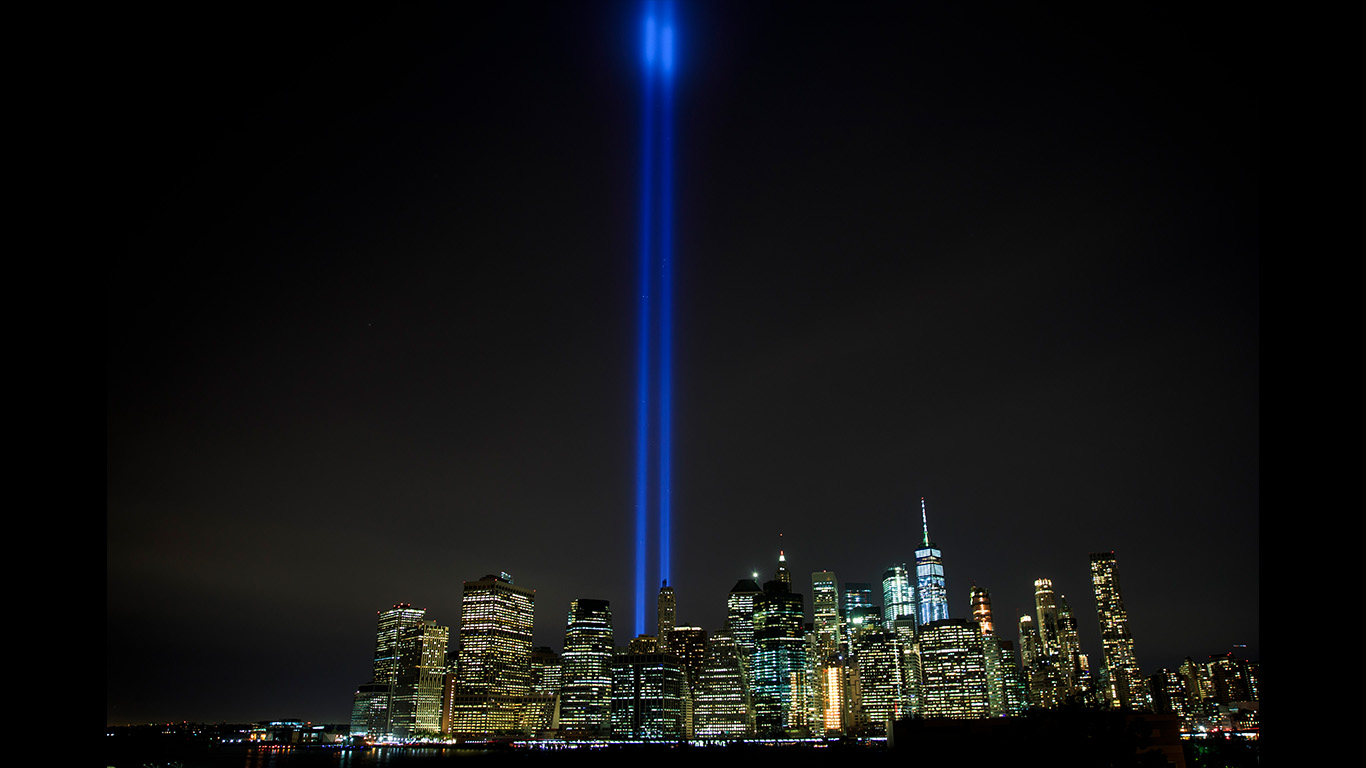
32. New York
> Tragedy: Sept. 11 Attacks
> Date: September 11, 2001
> Total fatalities: 2,996
> Other event considered: Triangle Shirtwaist Factory Fire
It was a clear Tuesday morning in New York City that would soon be remembered as the day of the deadliest terror attack in U.S. history. Financed by al-Qaeda, four planes intended for cross-country travel were hijacked and rerouted to different destinations. The first attack hit the north tower of the World Trade Center, followed by a second strike 17 minutes later on the south tower. The massive explosion and collapse of the World Trade Center covered the streets and surrounding buildings in ash and debris. A total of 2,763 people died on 9/11 in New York City, including hundreds of emergency personnel.
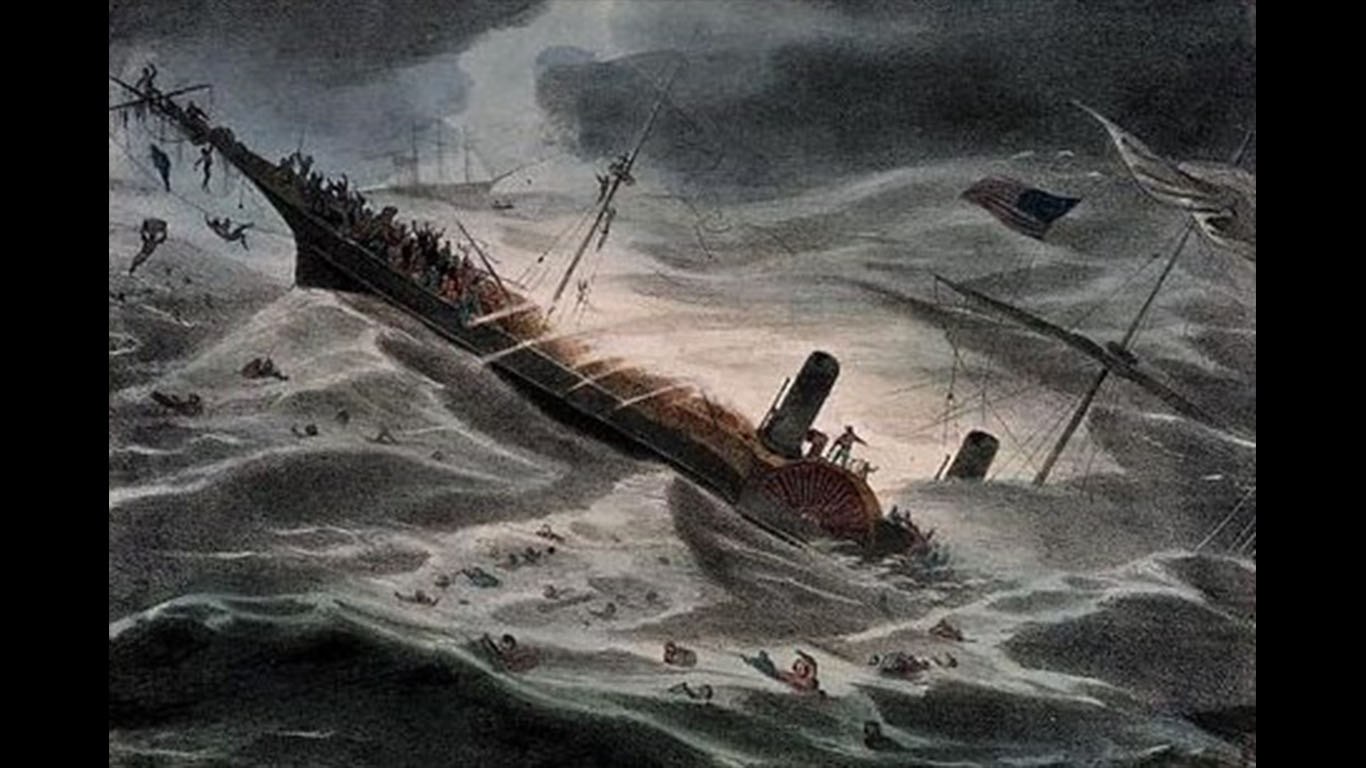
33. North Carolina
> Tragedy: SS Central America
> Date: Sept. 12, 1857
> Total fatalities: 425
> Other event considered: Rennert Railroad Crash Killed
The mail steamship S.S. Central America, bound for New York after leaving Havana, Cuba sank during a hurricane on Sept. 12,1857, about 160 miles off the North Carolina coast, taking 425 people to their death. Onboard was a trove of gold bars and gold coins, much of which was mined during the California gold rush. The failure of the gold to arrive at New York banks contributed to a brief financial crisis. Since the shipwreck was found in 1987, insurance and salvage companies have been in negotiations over who has rights to the gold.
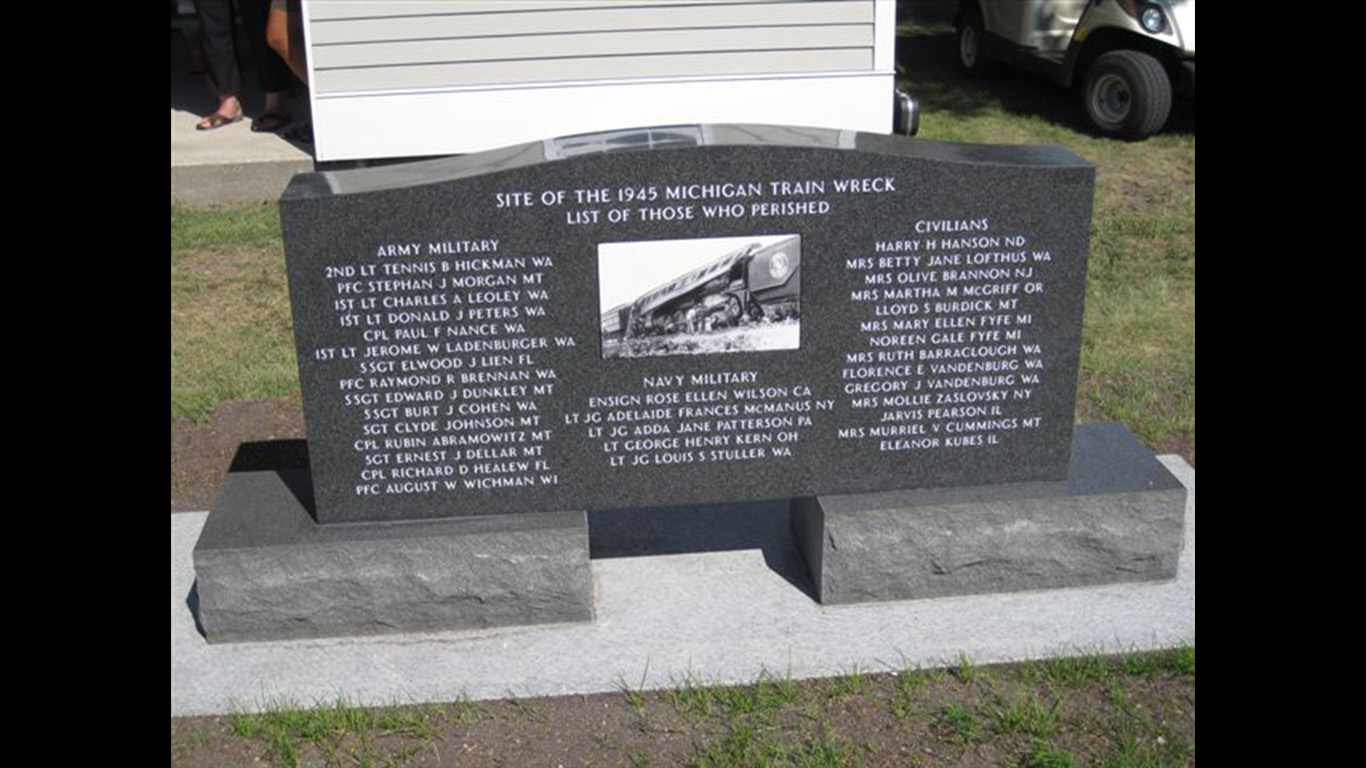
34. North Dakota
> Tragedy: Michigan ND Train Wreck
> Date: August 9, 1945
> Total fatalities: 34
> Other event considered: 1888 Schoolhouse Blizzard
Towards the end of the Second World War, demand for the Great Northern Railway was so great that it typically ran two trains on the same schedule. On August 9, 1945, the first train overheated and had to stop in Michigan, North Dakota. The second train was unable to stop before running into the first. The collision killed 34 people and injured over 300.
Most of those involved in the crash — and most of the fatalities — were military personnel returning to the U.S. after claiming victory in the European theater of World War II.
[in-text-ad-2]
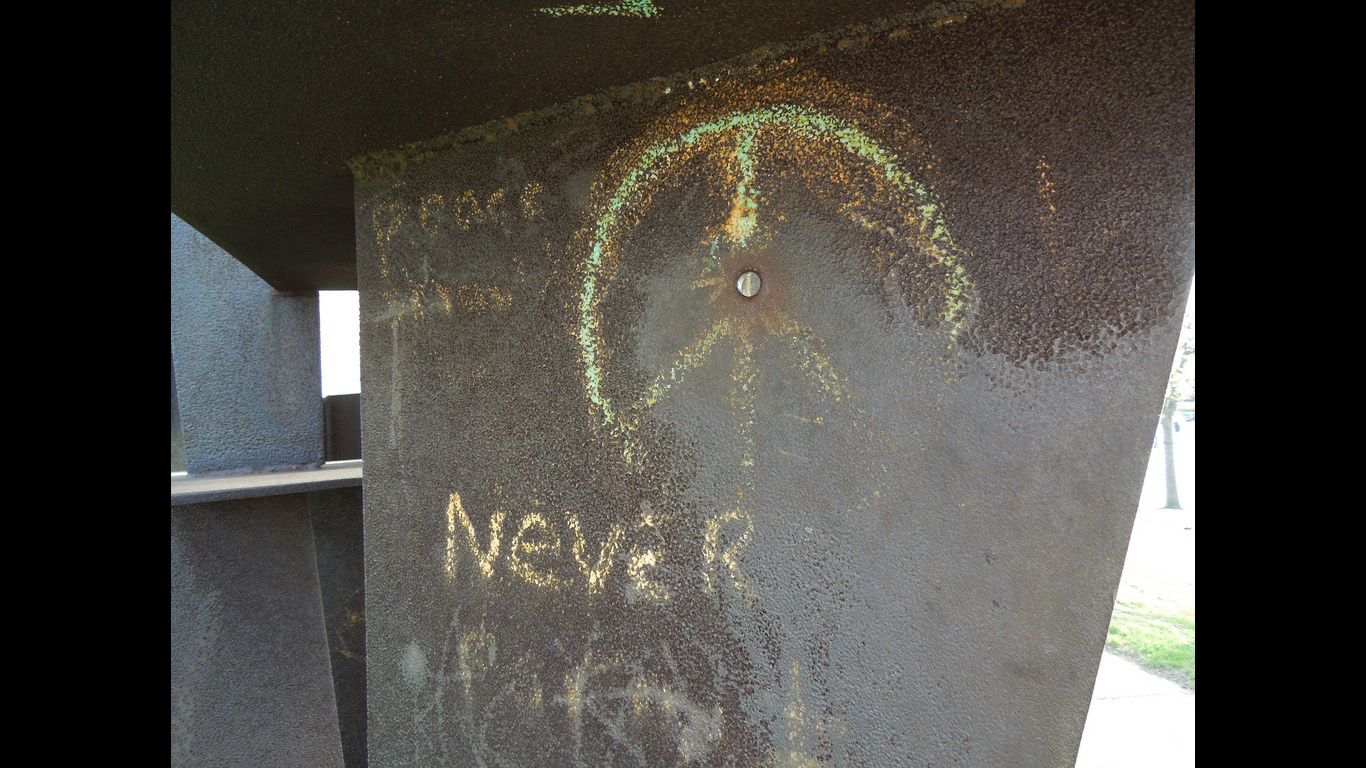
35. Ohio
> Tragedy: Kent State Shootings
> Date: May 4, 1970
> Total fatalities: 4
> Other event considered: 1913 Flood
The divisiveness of the Vietnam War was brought into stark relief when the Ohio National Guard fired on Kent State University students demonstrating against the conflict, killing four people. The protests were sparked by President Nixon’s decision in late April to attack Cambodia, which the U.S. claimed was providing sanctuary for the Viet Cong. Protests on the Kent State campus escalated and the National Guard was called in. On May 4, the guardsmen fired shots at the demonstrators after they were told to disperse. Nixon aide H.R. Haldeman in his book “In the Ends of Power’’ claims the Kent State tragedy led to the Watergate debacle and the ultimate destruction of the Nixon presidency.
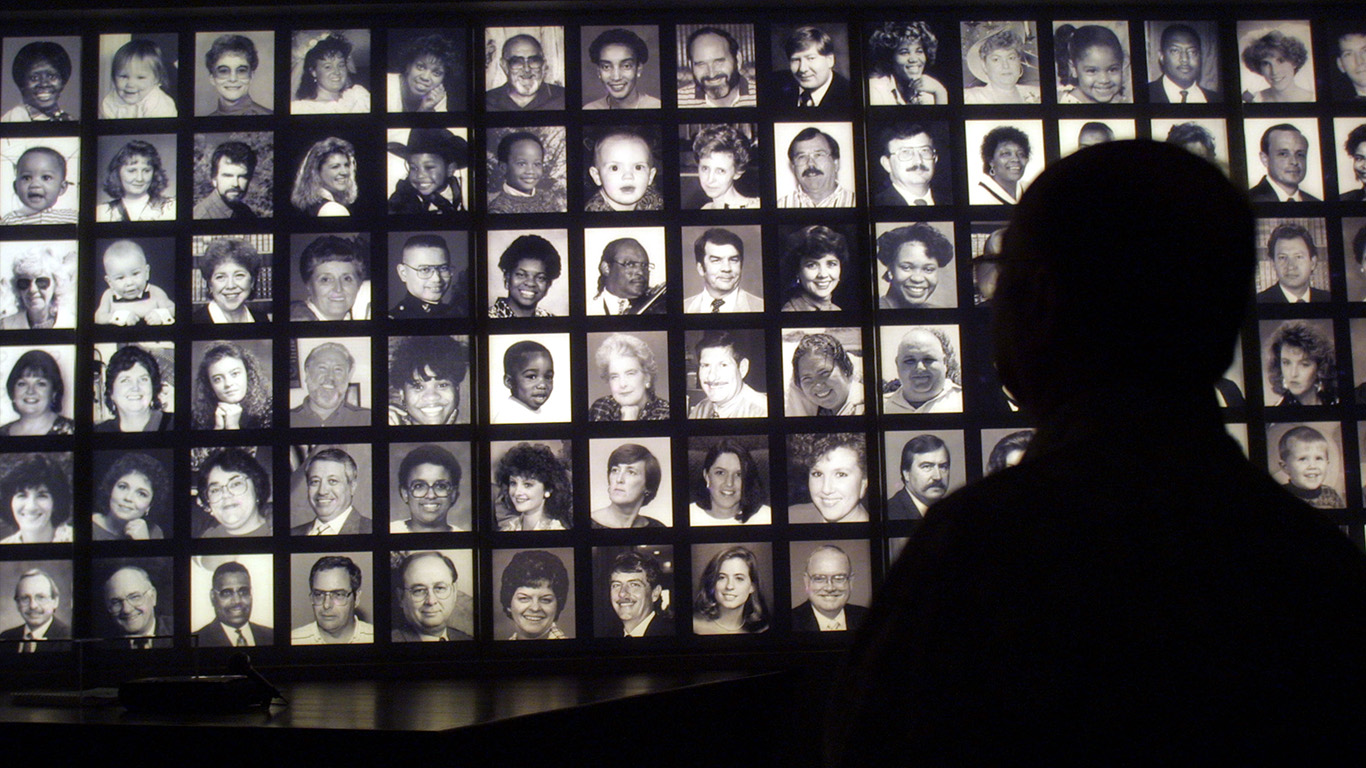
36. Oklahoma
> Tragedy: Oklahoma City Bombing
> Date: April 19, 1995
> Total fatalities: 168
> Other event considered: 1947 Glazier–Higgins–Woodward tornadoes
On the morning of April 19, a bomb planted by anti-government terrorist Timothy McVeigh exploded at the Alfred P. Murrah Federal Building in Oklahoma City. The entire front side of the building was blown away, killing dozens of government employees, as well as a number of children at a daycare center on the second floor of the building. The bombing would remain the worst terrorist attack on American soil until the Sept. 11 attacks.
[in-text-ad]
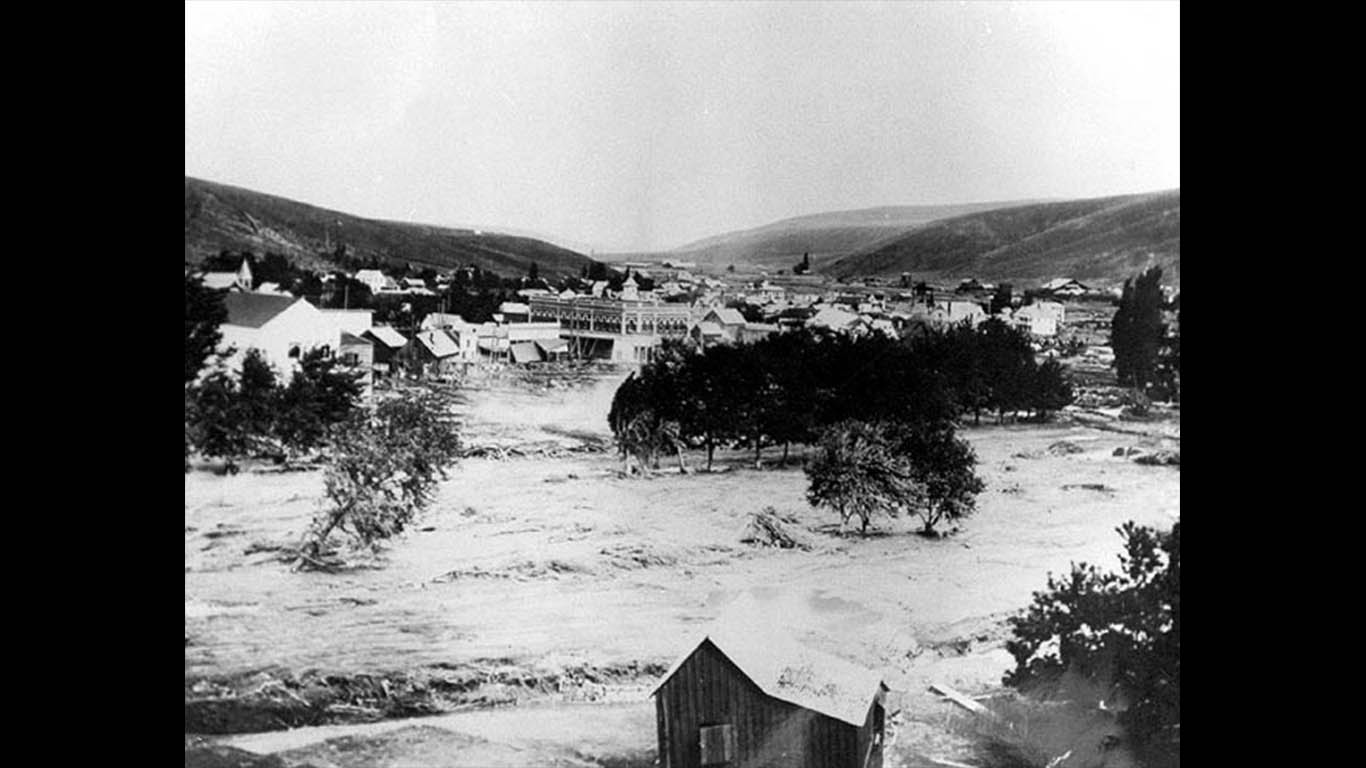
37. Oregon
> Tragedy: Heppner Flash Flood of 1903
> Date: June 14, 1903
> Total fatalities: 247+
> Other event considered: Vanport flood
A sudden and deadly flash flood swept through Heppner, Oregon in 1903, overwhelming the normally calm Willow Creek. Reports say that 247 people drowned as waters rose up to 40 feet high and inundated the town. The death toll would have been much higher, but towns in the path of those waters were warned ahead of time and were able to evacuate. It’s unclear exactly how much rain fell during the disaster because the local weather station was destroyed in the flood.
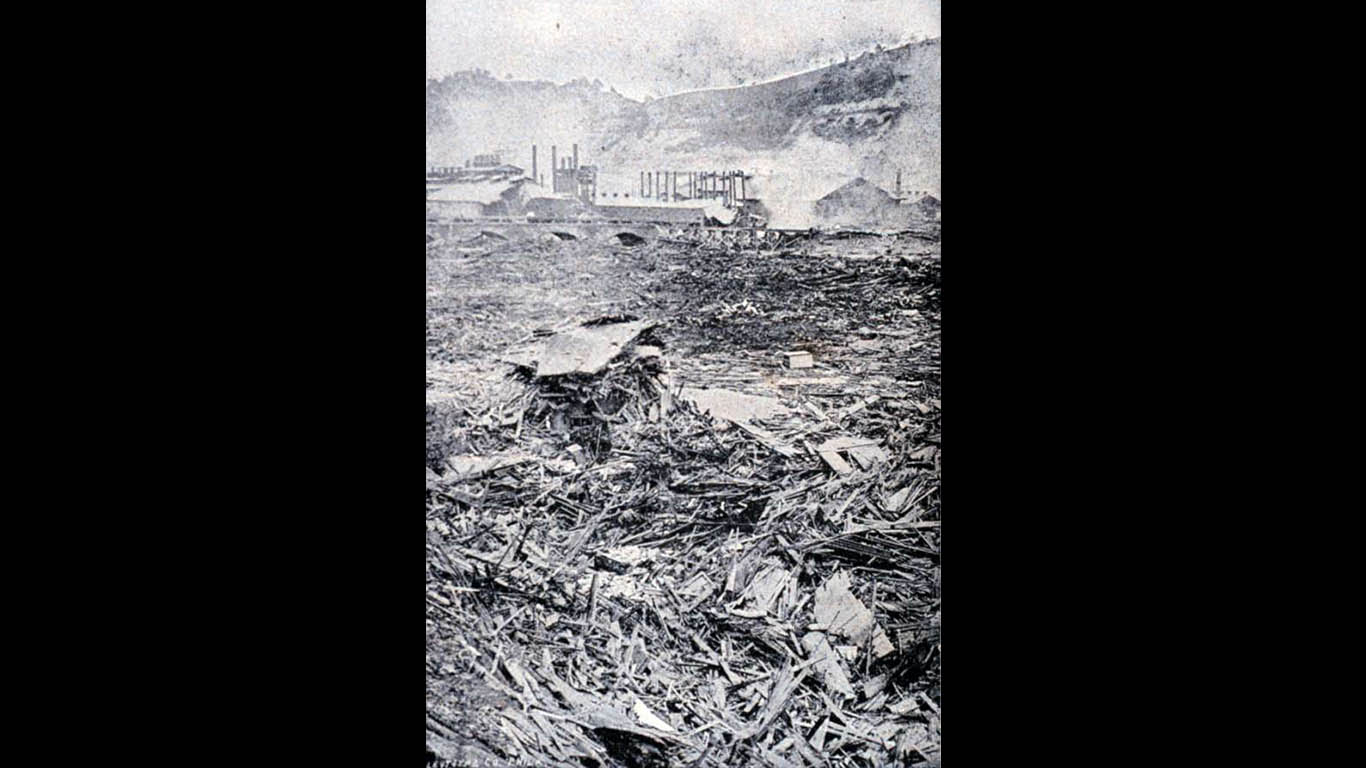
38. Pennsylvania
> Tragedy: The Johnstown Flood
> Date: May 31, 1889
> Total fatalities: 2,209
> Other event considered: Darr Mine Disaster
The Johnstown flood occurred on May 31, 1889, when a dam burst following several days of heavy rain. The size and scope of the flood is difficult to comprehend even today. Up to 2,209 people died, including 99 entire families; bodies were found as far away as Cincinnati, and as late as 1911; flood lines were marked as high as 89 feet above river level; the wave that struck Johnstown was said to be 40 feet high. The South Fork Fishing and Hunting Club, whose members included industrialists Andrew Carnegie and Henry Clay Frick, owned the dam but managed to avoid liability, prompting criticism from the press that led to changes in liability laws.
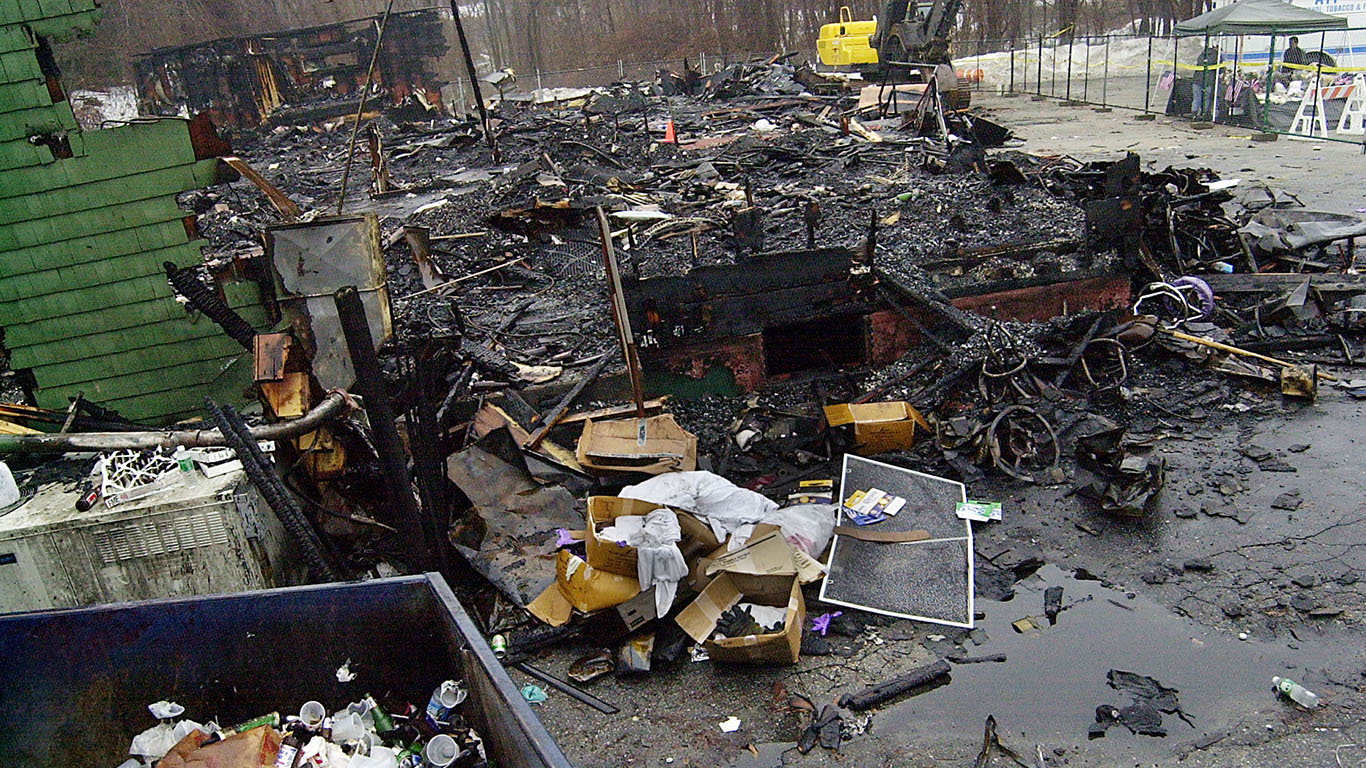
39. Rhode Island
> Tragedy: The Station Nightclub Fire
> Date: February 20, 2003
> Total fatalities: 100
> Other event considered: 1960 Nor’Easter
In 2003, fans poured into The Station nightclub in West Warwick, Rhode Island for a concert from rock band Great White. Pyrotechnics from the show caused a fire that spread rapidly, killing 100 and injuring more than 200. One of the deadliest accidents in U.S. history, former governor of Rhode Island Don Carcieri said The Station fire is the “state’s worst tragedy.”
[in-text-ad-2]

40. South Carolina
> Tragedy: 1893 Sea Islands Hurricane
> Date: August 27, 1893
> Total fatalities: 2,000+
> Other event considered: Charleston Church Shooting
In the late 19th century, the United States lacked the kind of weather prediction and warning system we have today. It was for this reason that South Carolina, and in particular the Sea Islands that form a barrier along the state coastline, were largely taken unawares by a hurricane in late August, 1893. The hurricane swept through the sea islands near Savannah after a sharp turn to the north, leaving over 2,000 dead. Most died by drowning.
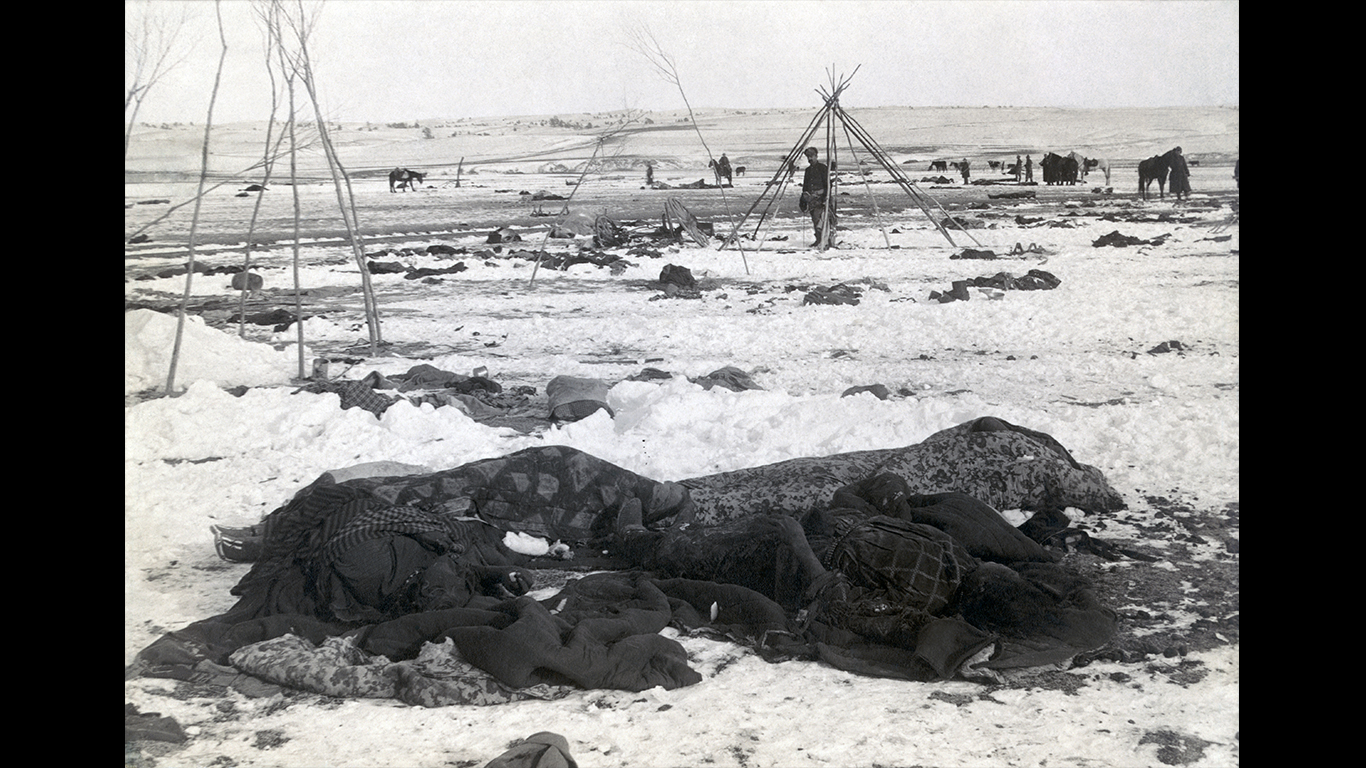
41. South Dakota
> Tragedy: Wounded Knee Massacre
> Date: December 29, 1890
> Total fatalities: 146-300
> Other event considered: Black Hills Flood
In the late 1800’s, a movement called the Ghost Dance had grown in popularity among Native American communities. The movement promised the return of lands and resources, and the end of oppression from Europeans. Settlers were concerned the natives were plotting something and demanded protection from the government and 5,000 troops headed up to South Dakota.
On December 29, police attempted to arrest Chief Big Foot and a violent shootout began. At least 150 Native Americans were killed, though the number may have been twice that high and 25 American soldiers were killed as well.
[in-text-ad]

42. Tennessee
> Tragedy: Great Train Wreck
> Date: July 9, 1918
> Total fatalities: 101
> Other event considered: 1952 Tornado outbreak
In 1918, 121 people died due to engineer error after two trains collided head-on just outside of Nashville, becoming the worst train wreck in American history. As the engineer of a Nashville-bound train was approaching the signal tower, he was given a clearing. Although being signaled to stop, the train continued and collided with the Memphis-bound train at about 50 miles per hour. The vast majority of the victims were African-American’s who were seated on wooden carts. Despite the high death toll, the news never made national coverage.

43. Texas
> Tragedy: Galveston Hurricane
> Date: September 8, 1900
> Total fatalities: 6,000-12,000
> Other event considered: Assassination of JFK
The Galveston Hurricane of 1900 continues to be the deadliest natural disaster in U.S. history. It’s believed that 8,000 people were killed in the high winds and 15-foot storm surge brought by the category 4 hurricane. But the true number could be as high as 12,000 people.
Though the storm was powerful, many of the casualties could have been avoided. The Weather Bureau, which became the National Weather Service, predicted the storm would land much further east. Warnings from Cuba about the storm were ignored and the city was largely unprepared. Galveston was once a booming port city, but the destruction of the hurricane was too much for the city to fully recover from as investors began to favor Houston instead.

44. Utah
> Tragedy: Scofield Mine Disaster
> Date: May 1, 1900
> Total fatalities: 200
> Other event considered: Bingham Canyon Avalanche
The Scofield Mine Disaster claimed the lives of 200 coal miners, many of them immigrants from Finland. It was the worst mine disaster in America to that point, and the worst tragedy of any kind in Utah. When the blast occurred on the morning of May 1,1900, one miner standing near the entrance to the mine was thrown 820 feet. Many people died inhaling deadly gases that were suffocating the miners. State officials cleared mine operators and the Pleasant Valley Coal Company for failing to implement proper safety precautions. The company continued operating the mine until 1923. Since then, Scofield has become a ghost town.
[in-text-ad-2]
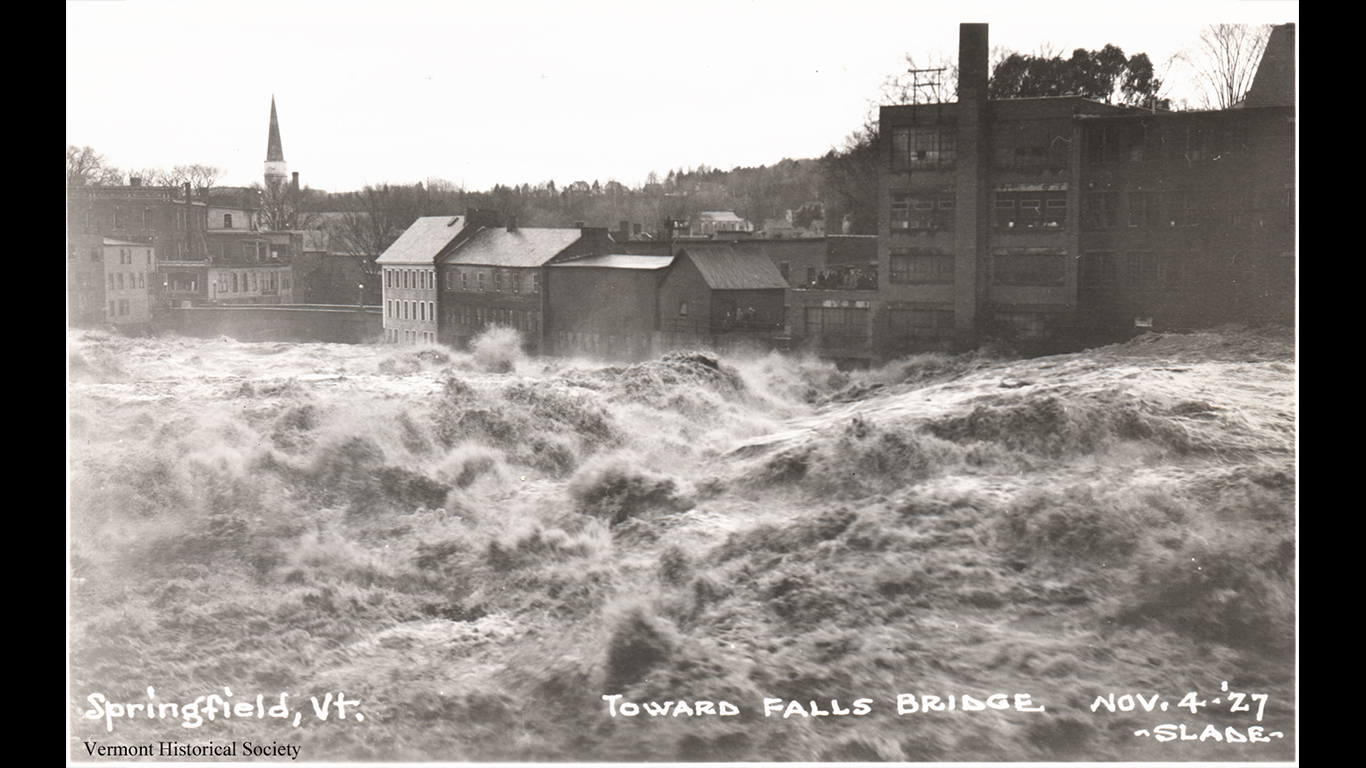
45. Vermont
> Tragedy: Great Vermont flood
> Date: November 2-4, 1927
> Total fatalities: 84
> Other event considered: Hartford Railroad Disaster
Autumn of 1927 was uncharacteristically rainy in Vermont, with the state getting more than double the amount of rain it normally gets in October. It’s believed those heavy rains made the ground unable to absorb the early November rains that led to Vermont’s greatest tragedy.
Some 84 people were killed in the floods, including the lieutenant governor. The waters also decimated the state’s infrastructure, wiping out more than 1,200 bridges, destroying homes and miles of roadway.

46. Virginia
> Tragedy: Virginia Tech shooting
> Date: April 16, 2007
> Total fatalities: 32
> Other event considered: Hurricane Camille
Two separate shooting incidents in the university town of Blacksburg resulted in what we now call the Virginia Tech massacre, becoming the deadliest mass shooting in U.S. history at the time.The killings first occurred when a couple were shot at early morning in a dormitory. The 23-year-old shooter, Seung Hui Cho, would then leave the campus to mail photos and a video of himself. The video contained footage of him ranting about wealthy students, among other topics. Cho would come back to the school and lock several main doors before going room to room shooting people. In total, 27 students and 5 faculty members died as a result of the shooting.
[in-text-ad]
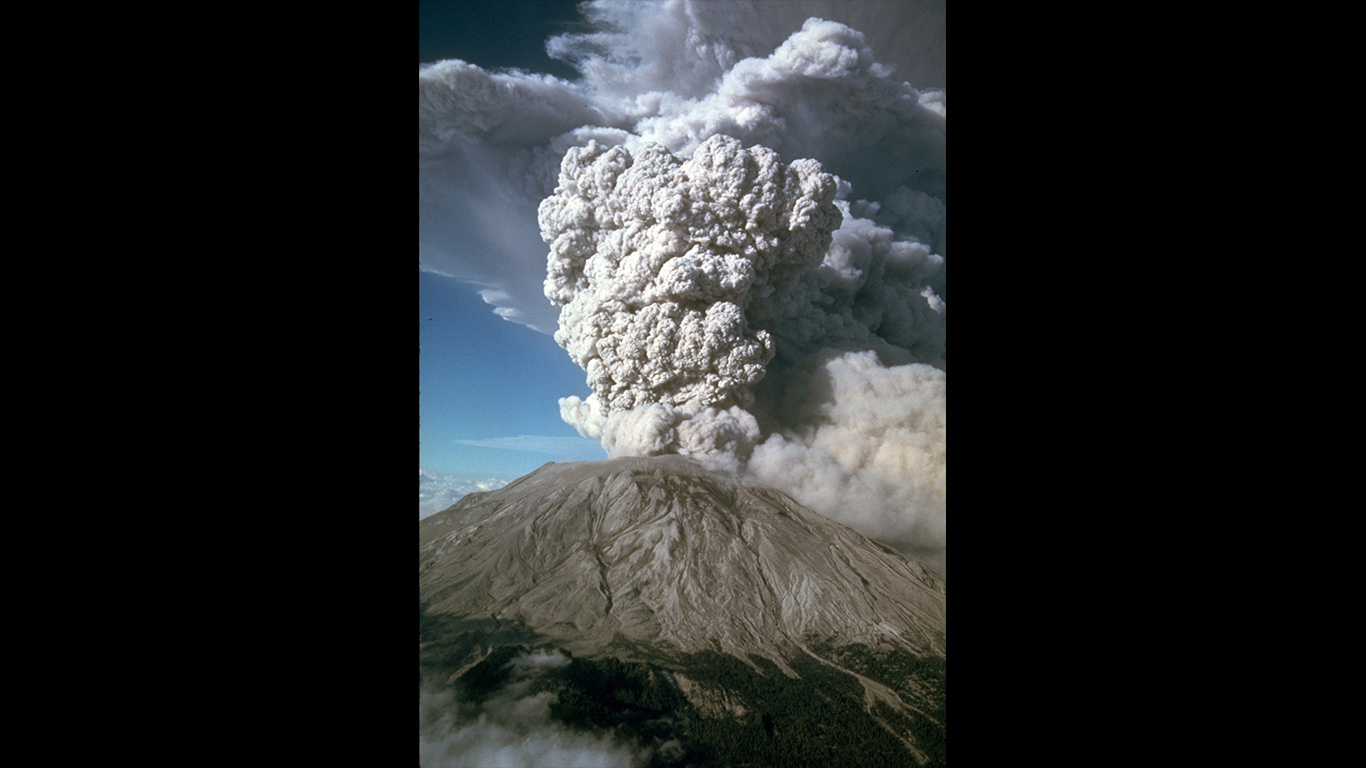
47. Washington
> Tragedy: Mount St. Helens Eruption
> Date: May 18, 1980
> Total fatalities: 57
> Other event considered: Stevens Pass Avalanche
The eruption of Mount St. Helens on May 18, 1980, is considered the most disastrous volcanic eruption in United States history. Before the eruption, there had been a two-month series of seismic events, including earthquakes and steam-venting episodes. An earthquake on the day of the eruption caused the volcano’s north face to slide off, creating the largest landslide ever recorded. This led to the release of high-pressure gas- and steam-rich rock and the volcano exploded. The Washington State Department of Game estimated that nearly 7,000 deer, elk, and bear perished in the area most affected by the eruption, as well as many birds and most small mammals. Millions of salmon also were killed. An estimated 57 people also perished.
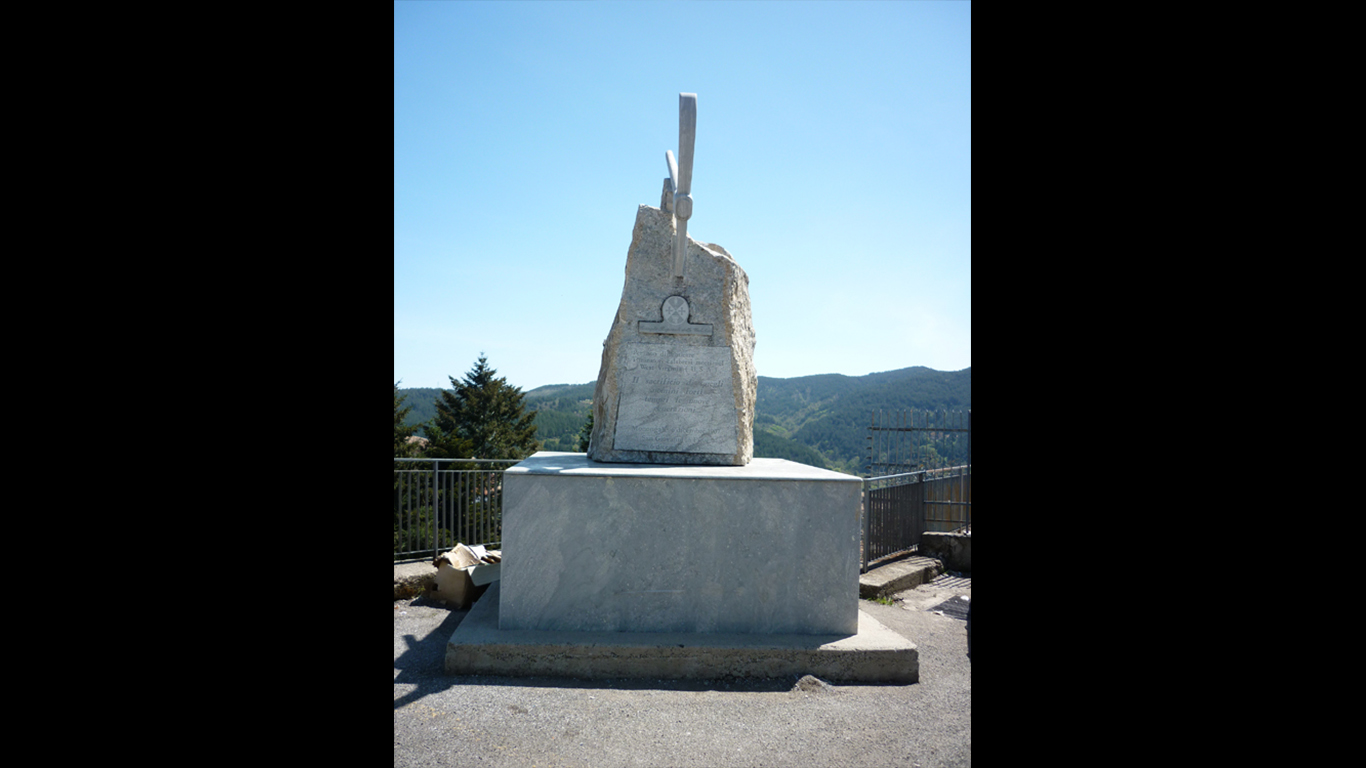
48. West Virginia
> Tragedy: Monongah mining disaster
> Date: December 6, 1907
> Total fatalities: 362
> Other event considered: Great Appalachian Storm of 1950
West Virginia is a state known for its coal mining industry, a dangerous profession that can put workers in jeopardy. In 1907, 362 miners were killed by explosions at the Monongah Coal Mines. It remains the deadliest mine disaster in United States history to this day.
The ground reportedly shook as far as eight miles away. West Virginia had looser regulations for mines and their conditions around this time, leading the state to have the highest mine death rate. In 1907, more than 3,200 Americans were killed in mine accidents nationwide.
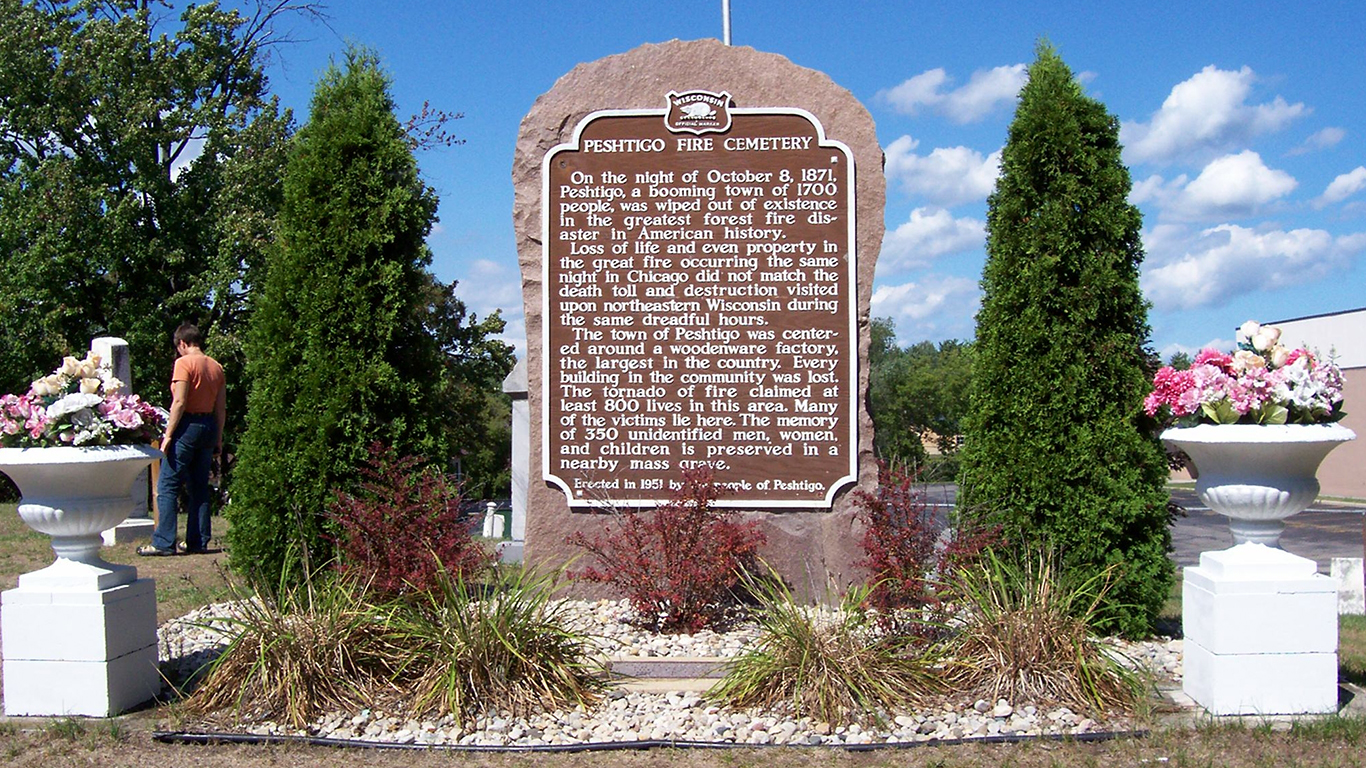
49. Wisconsin
> Tragedy: Peshtigo Fire
> Date: October 8, 1871
> Total fatalities: 1,500-2,500
> Other event considered: Sikh Temple Shooting
The deadliest wildfire in U.S. history occurred in rural Wisconsin in 1871. The Peshtigo Fire, as it came to be known, burned up over 1.5 million acres of land. It also killed at least 1,500 people, though amid all the destruction it was difficult to truly know the full death count. Some believe the actual figure could be as high as 2,500 in Wisconsin and Michigan.
Though it was the most lethal fire in U.S. history, the Peshtigo Fire isn’t as well known as other large scale U.S. tragedies because it came at the same time as the Great Chicago Fire.
[in-text-ad-2]
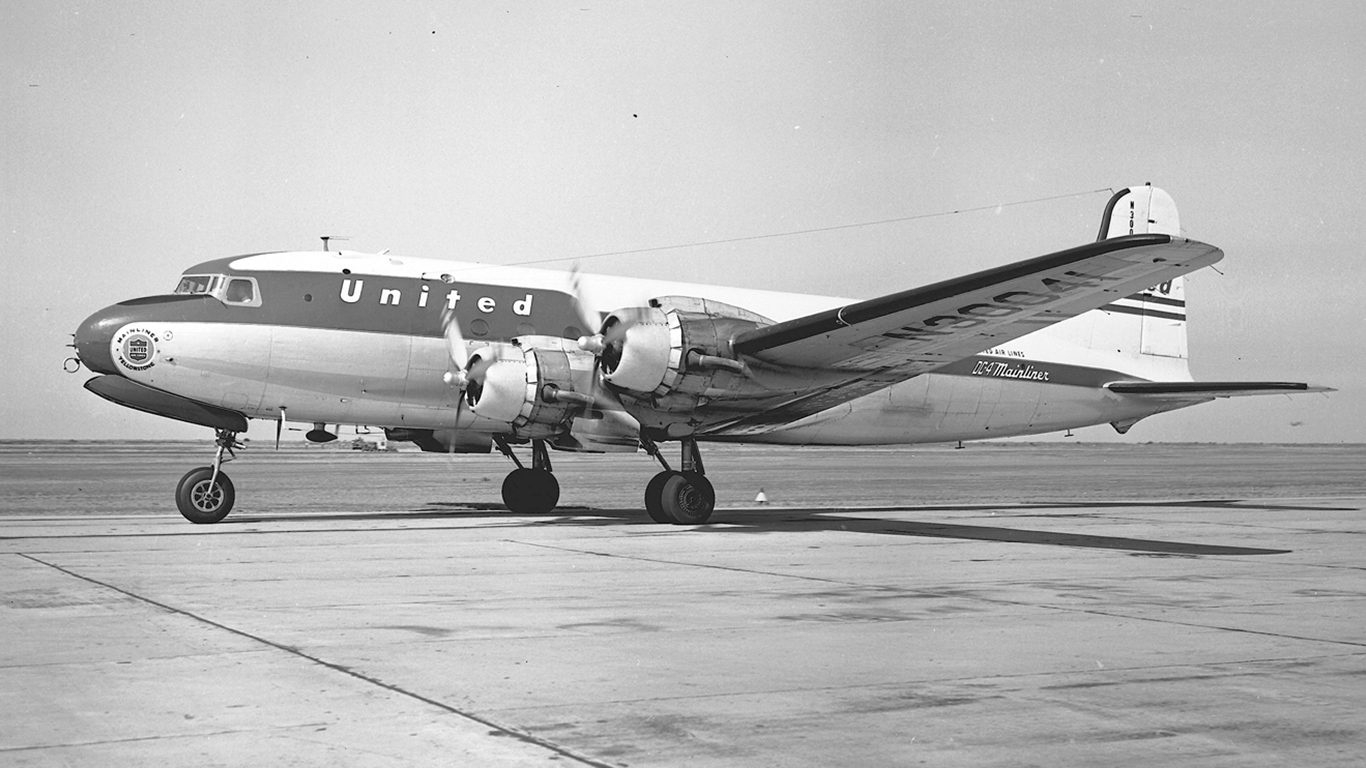
50. Wyoming
> Tragedy: United Airlines flight 409
> Date: Oct. 6, 1955
> Total fatalities: 66
> Other event considered: Blackwater fire
United Airlines flight 409, bound for Salt Lake City from Denver, crashed into the east side of Medicine Bow Peak 40 miles west of Laramie, Wyoming, killing 66 people. At the time, it was the worst air disaster in United States history. A Civil Aeronautics Board Accident Investigation Report said the pilot, Capt. Clinton C. Cooke, Jr., had flown the route 45 times in 1954. Cooke and his first officer, Ralph D. Salisburg, Jr., were considered good pilots with a perfect record. However, the report stated that it is almost certain the pilots flew over the mountains, probably to save time. Recovery of the bodies was difficult, and only the best mountaineers could reach the peak where most of the wreckage was.
Are you ready for retirement? Planning for retirement can be overwhelming, that’s why it could be a good idea to speak to a fiduciary financial advisor about your goals today.
Start by taking this retirement quiz right here from SmartAsset that will match you with up to 3 financial advisors that serve your area and beyond in 5 minutes. Smart Asset is now matching over 50,000 people a month.
Click here now to get started.
Thank you for reading! Have some feedback for us?
Contact the 24/7 Wall St. editorial team.